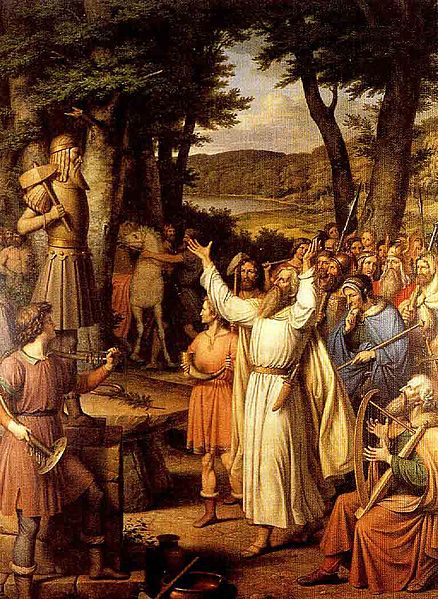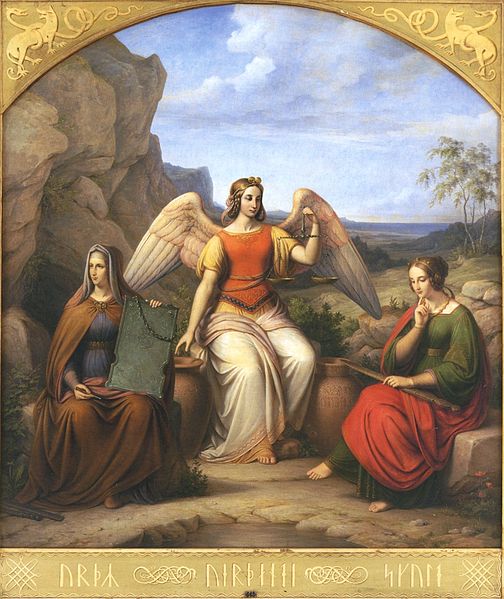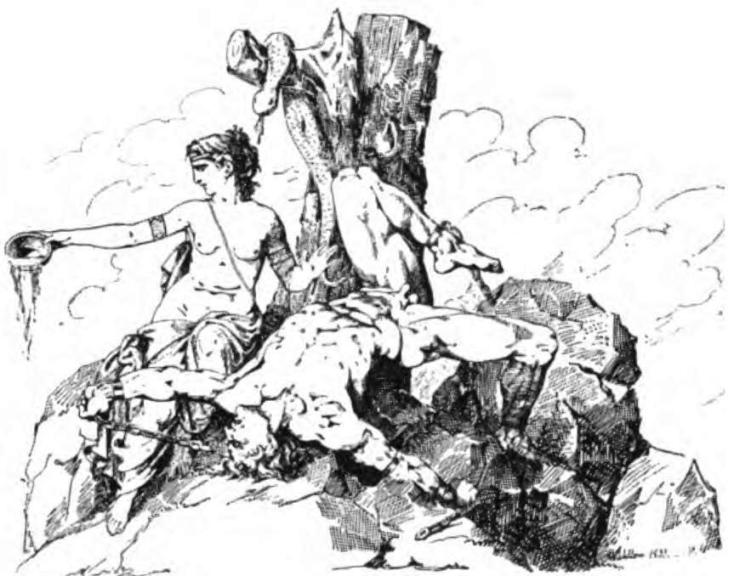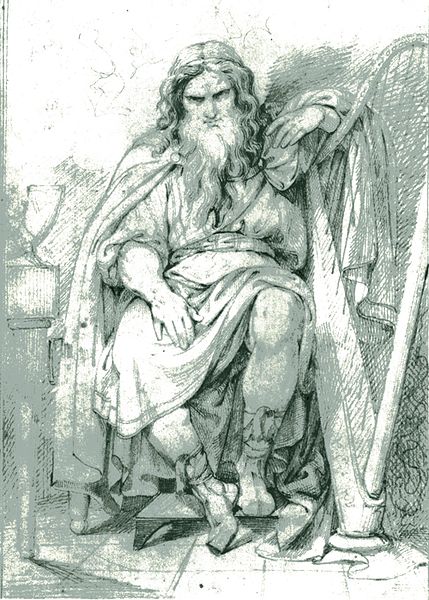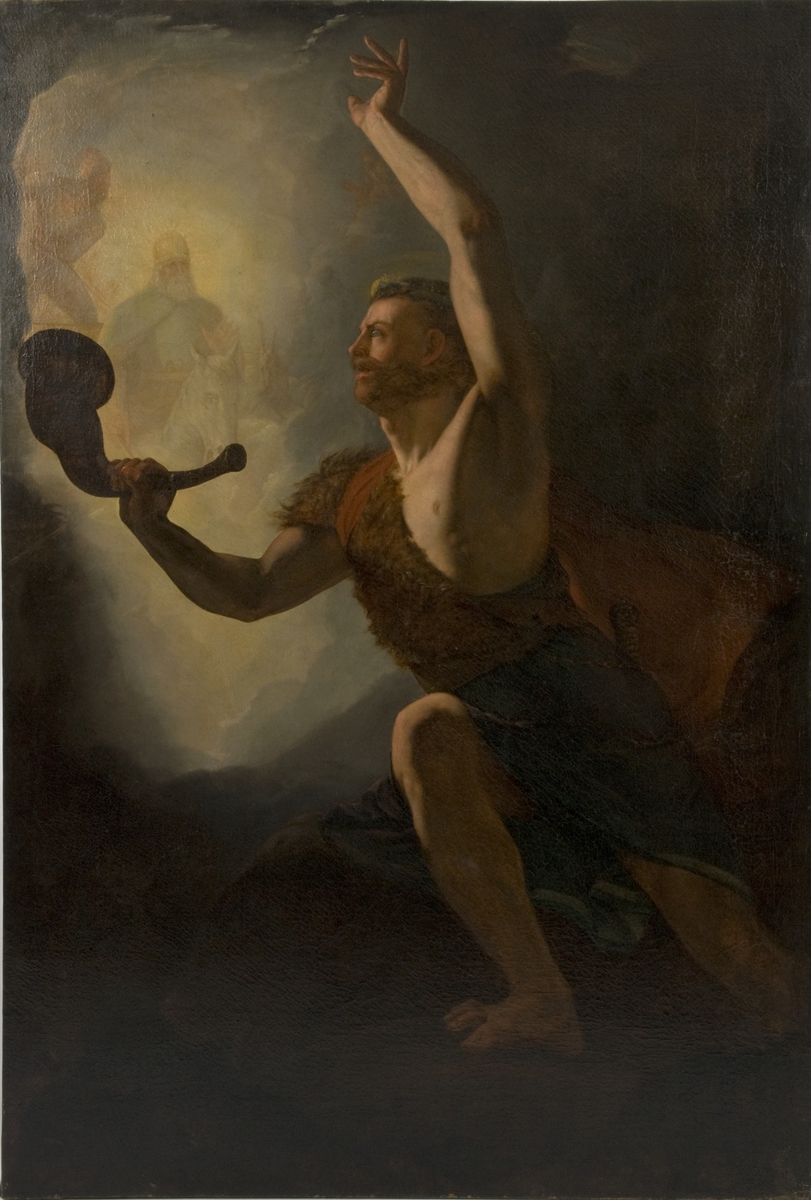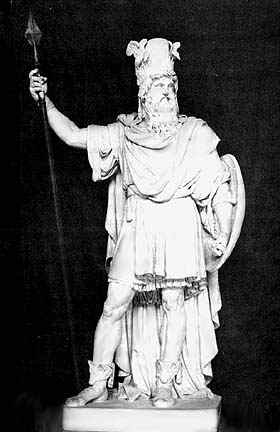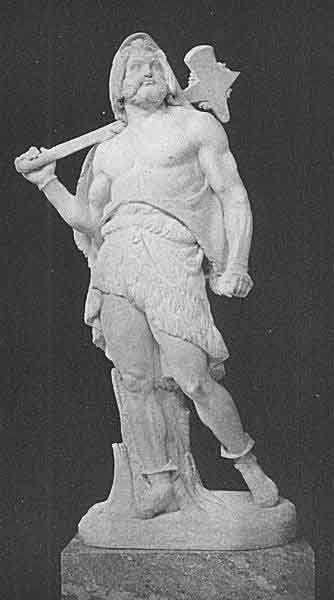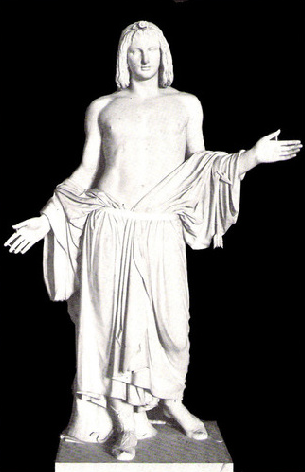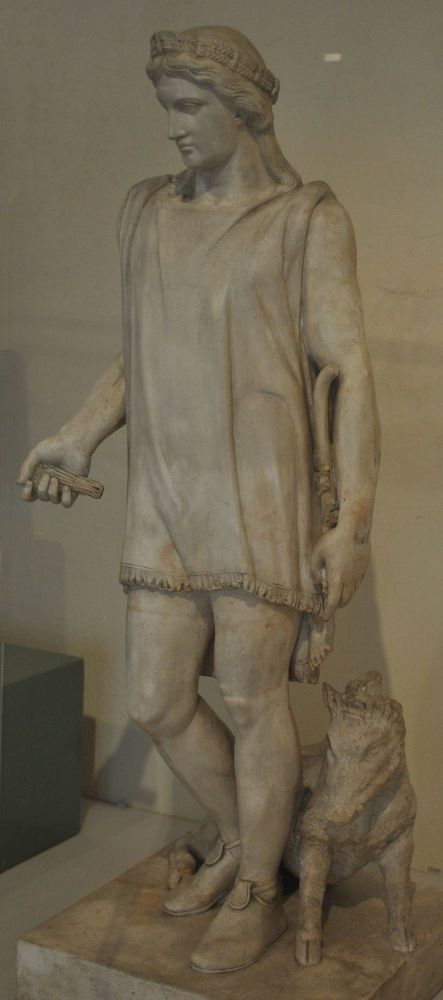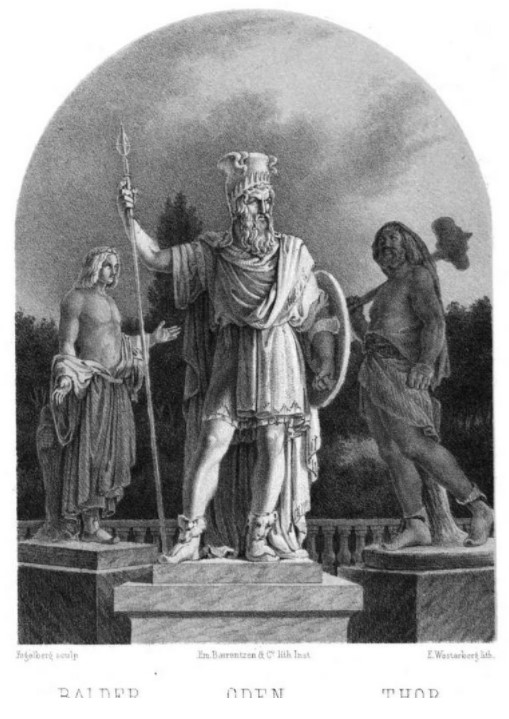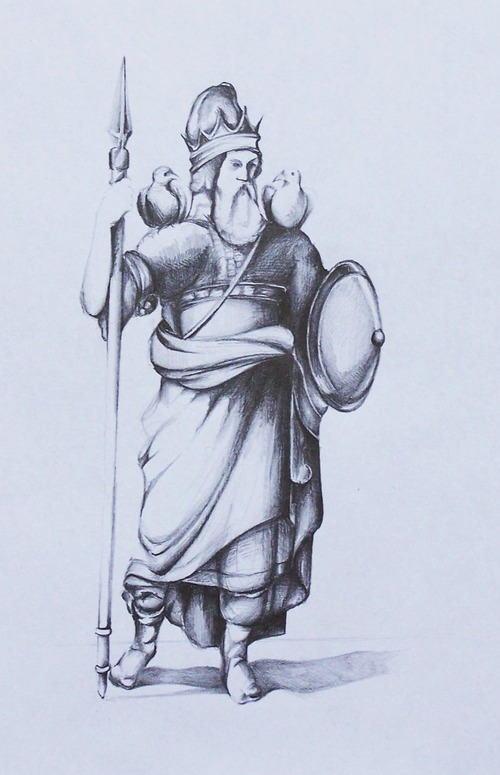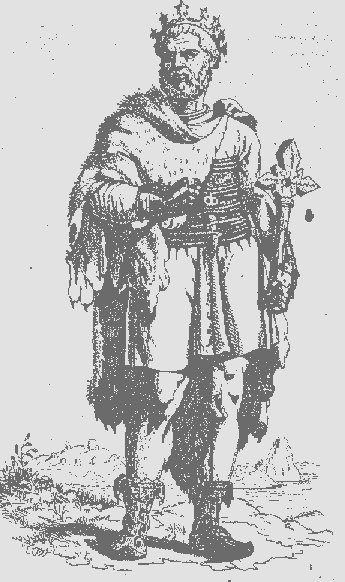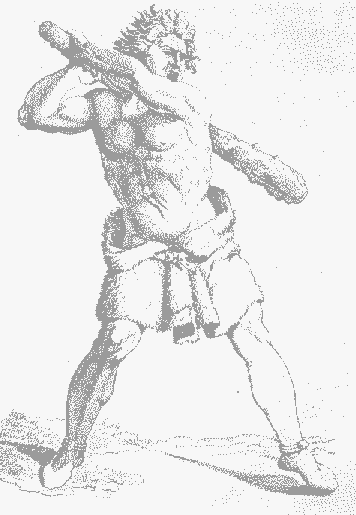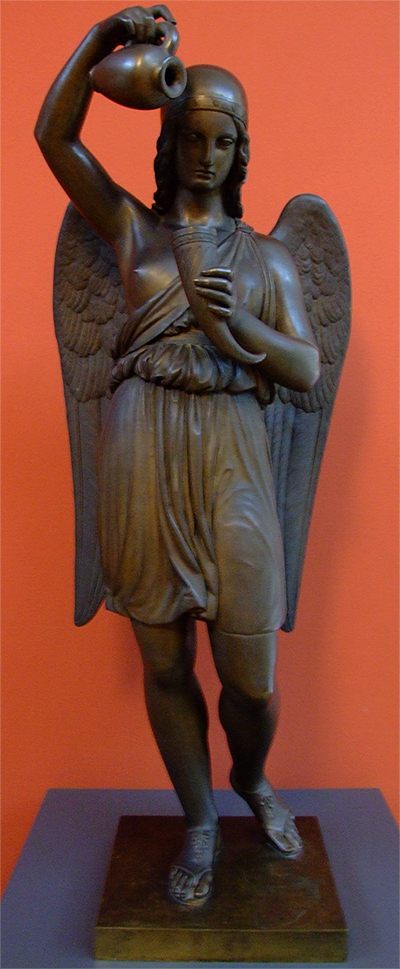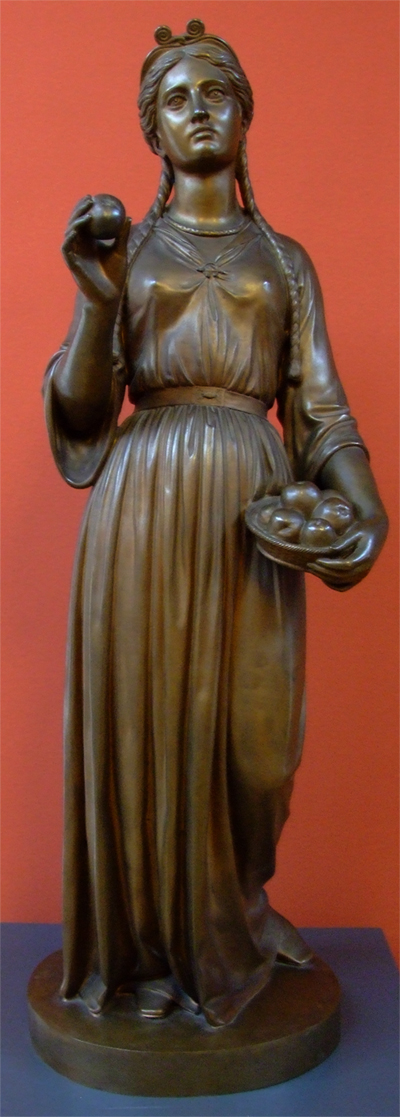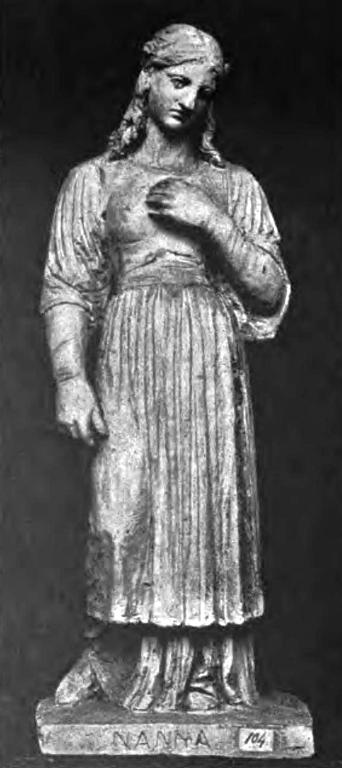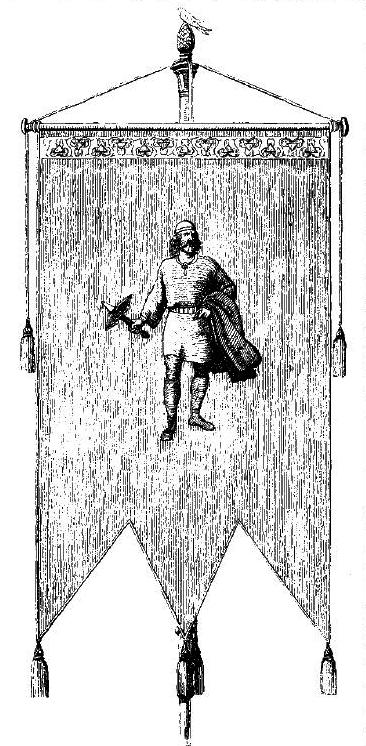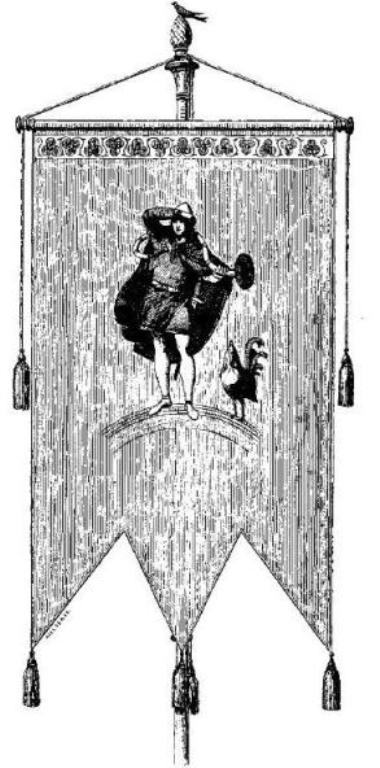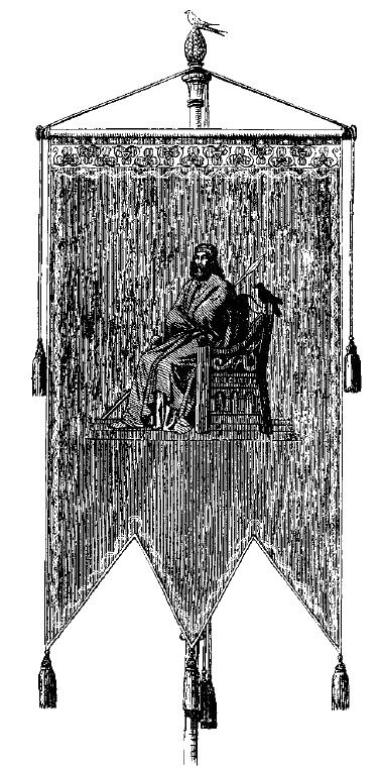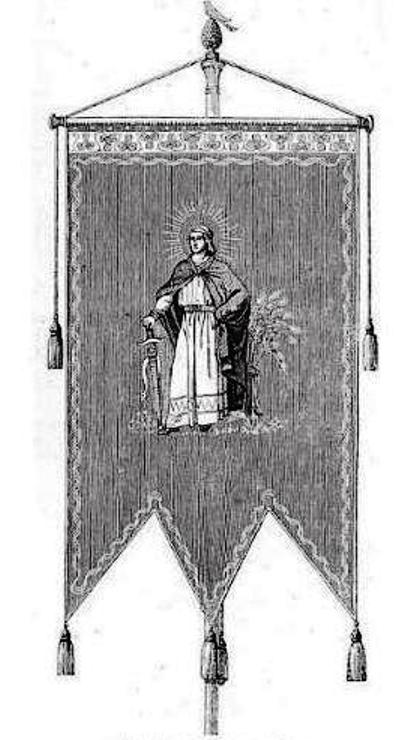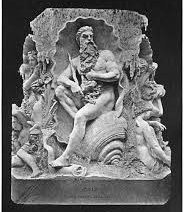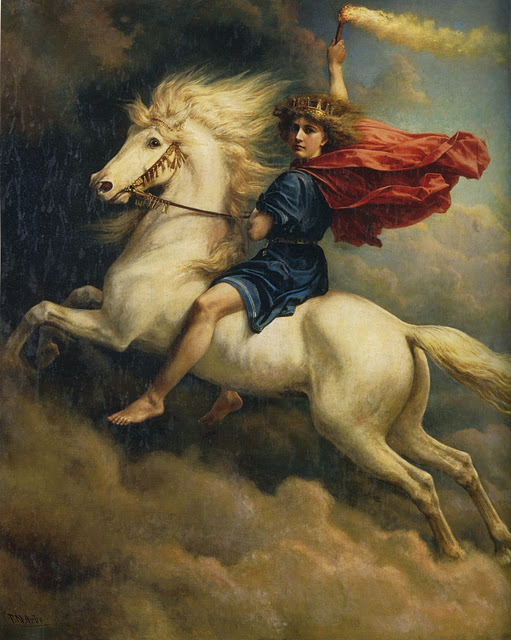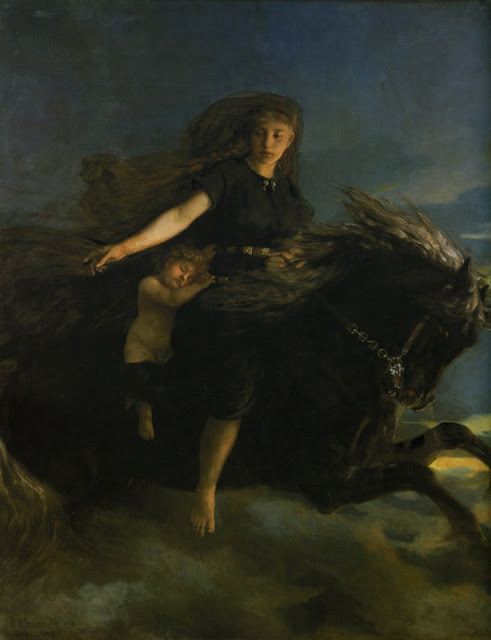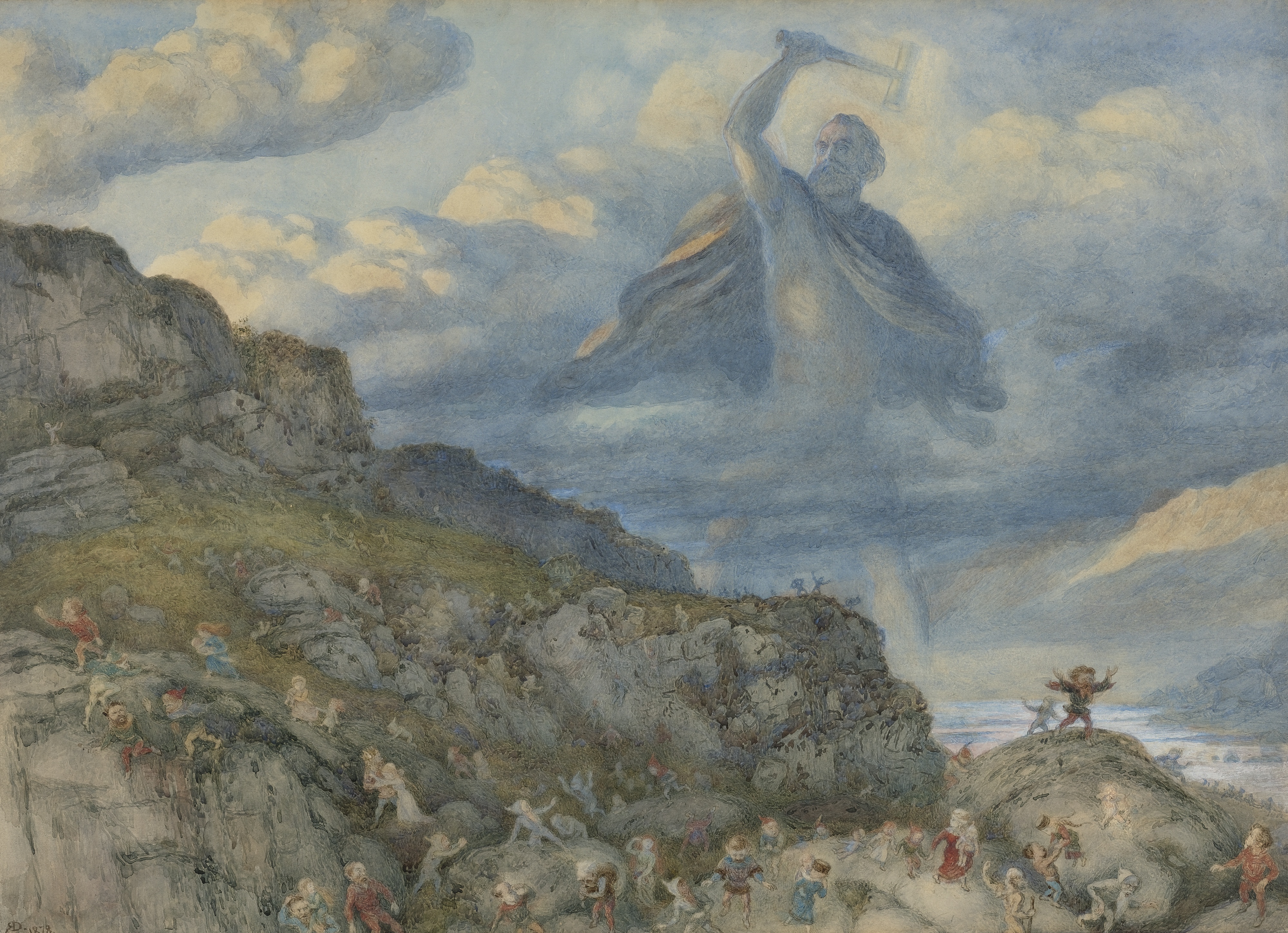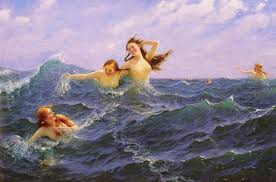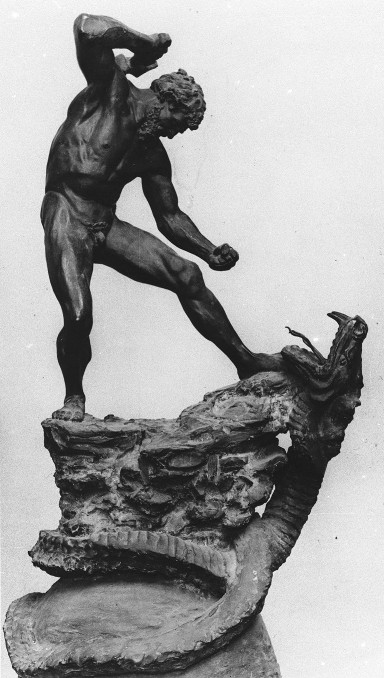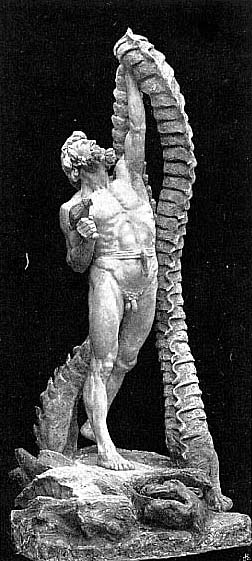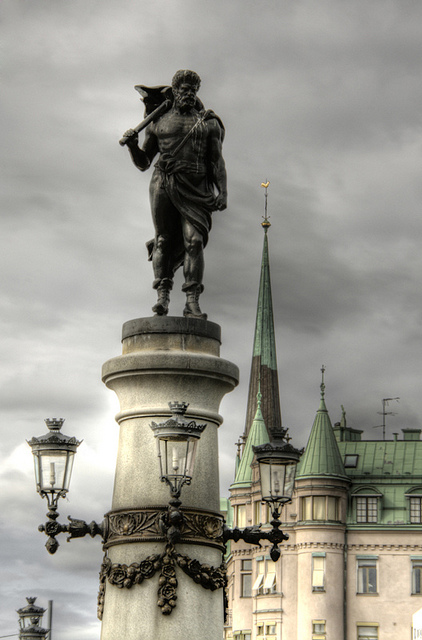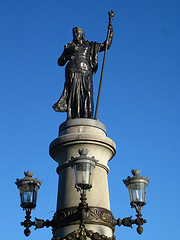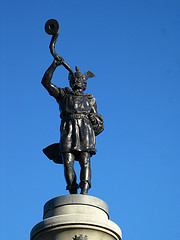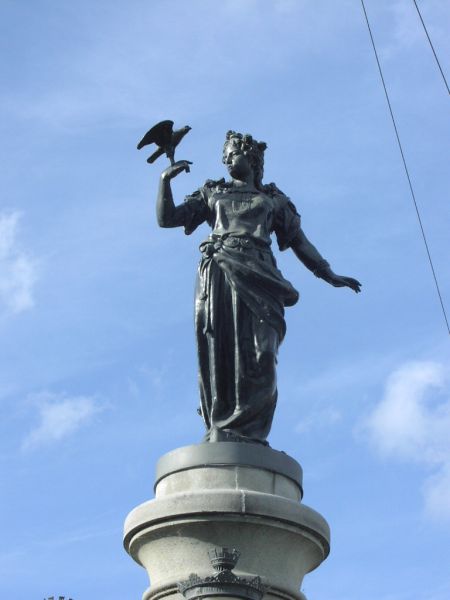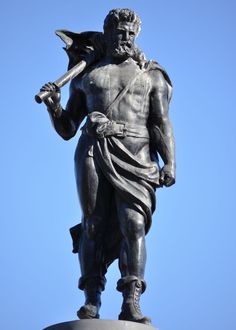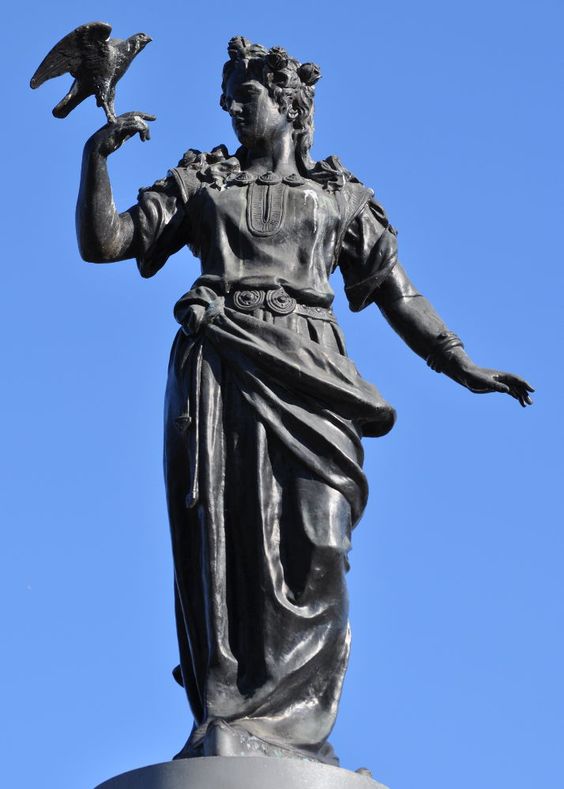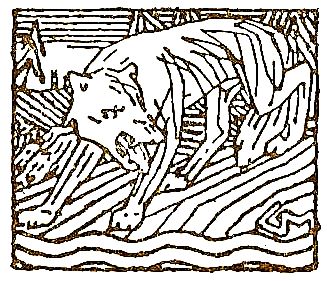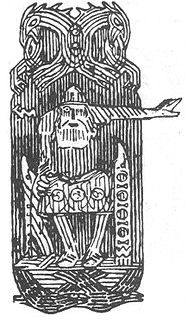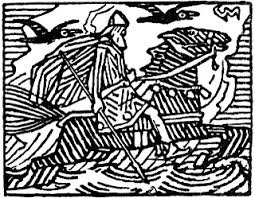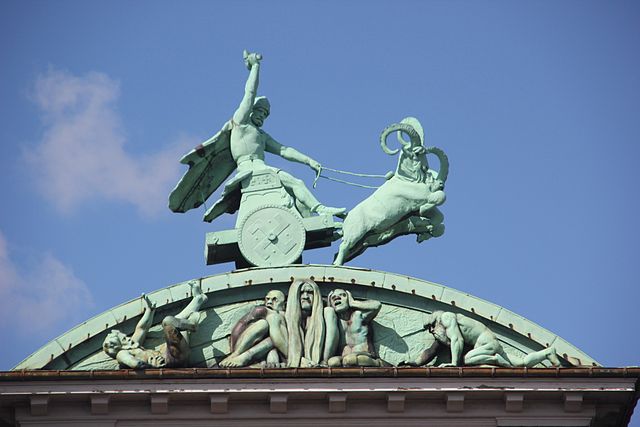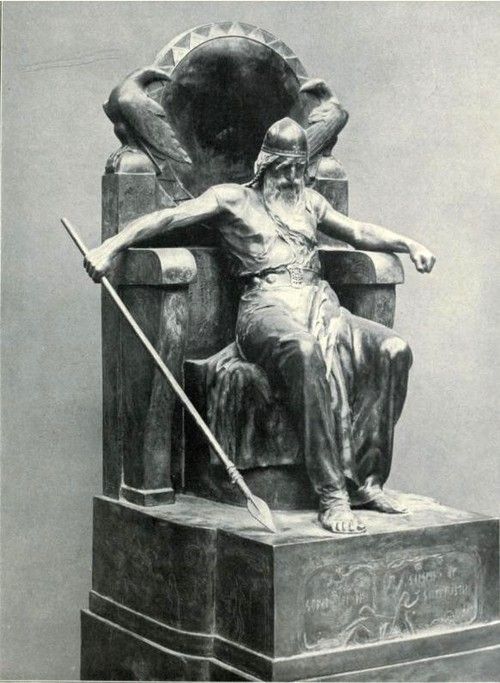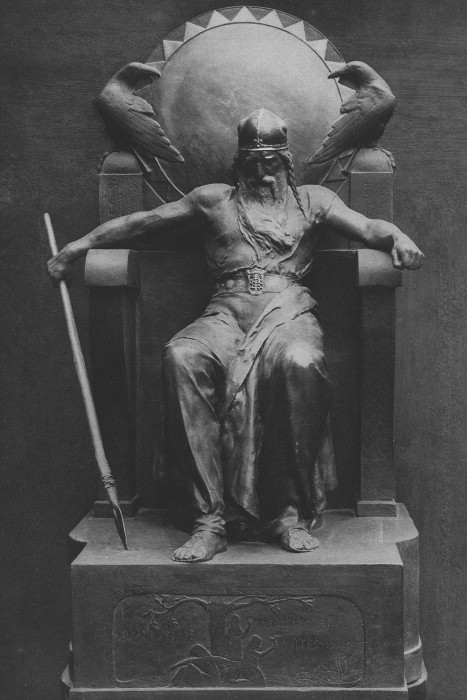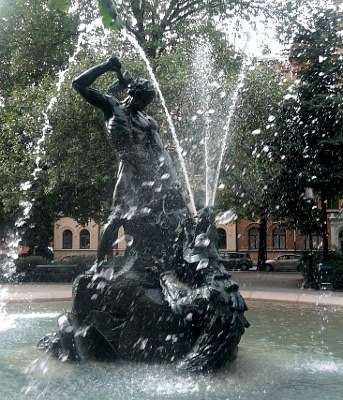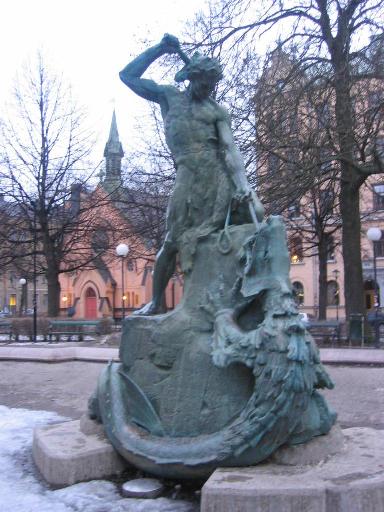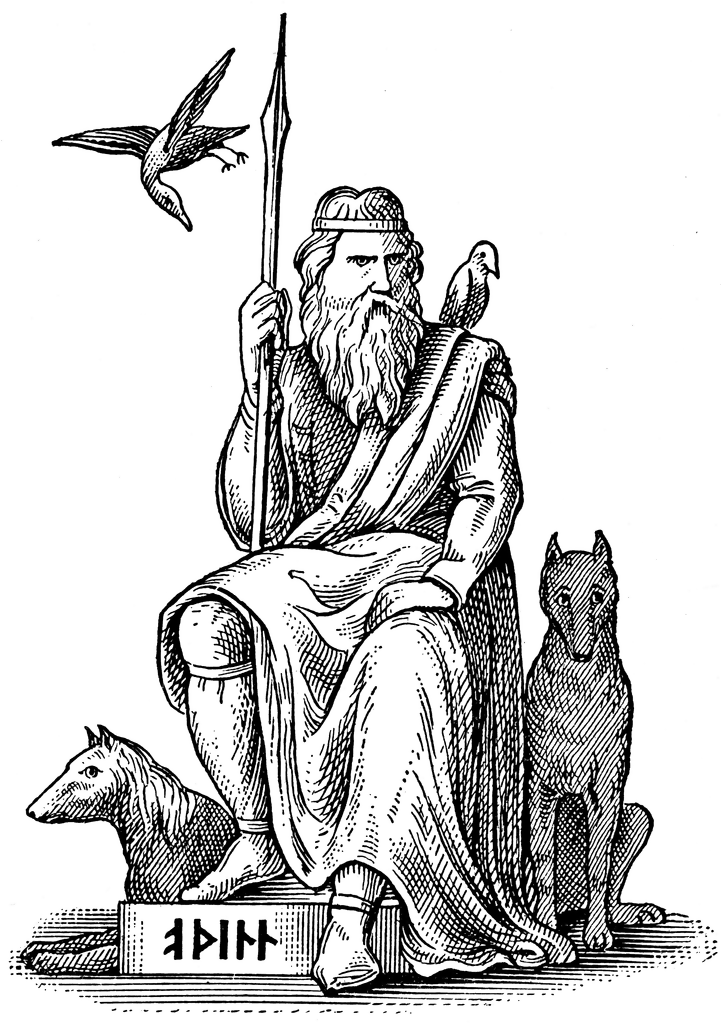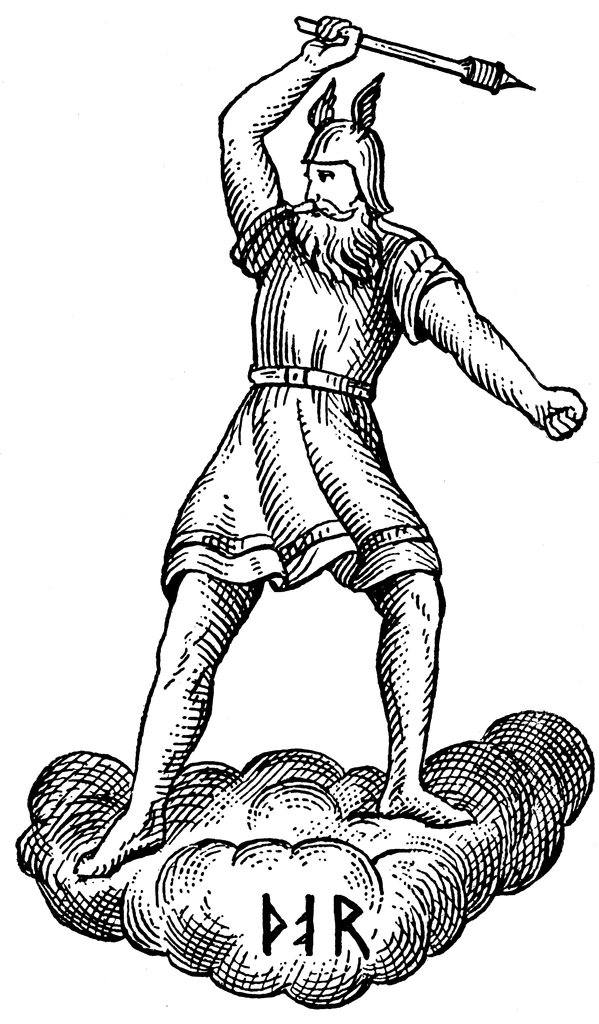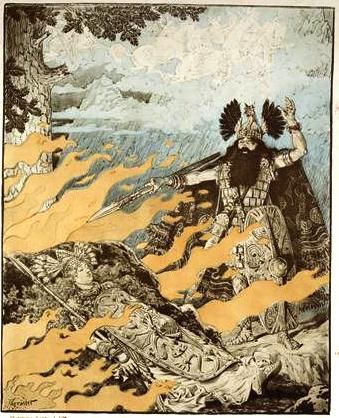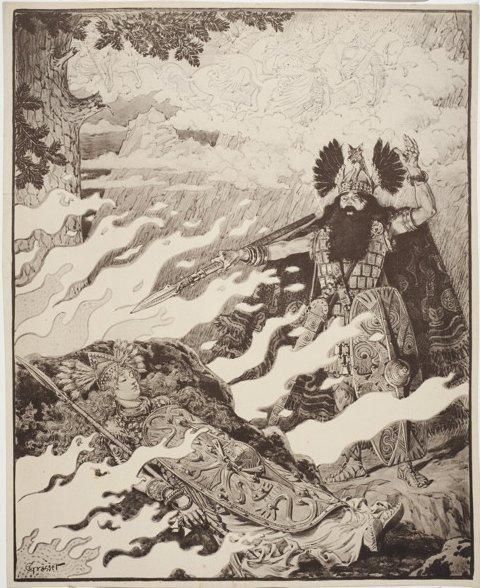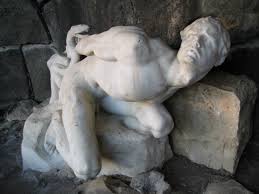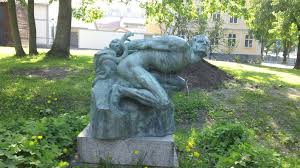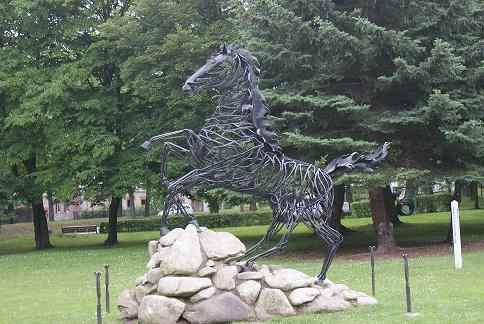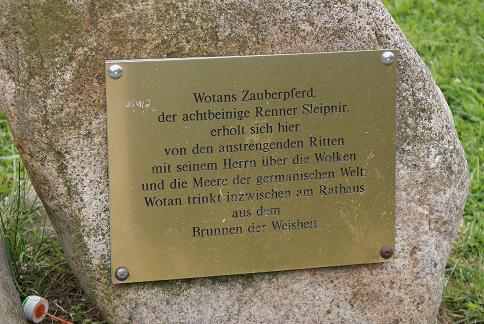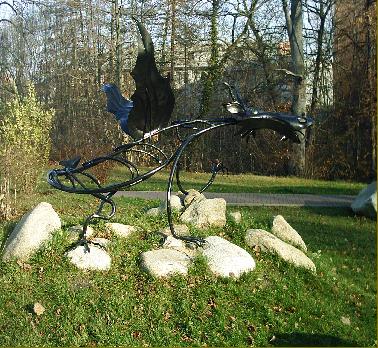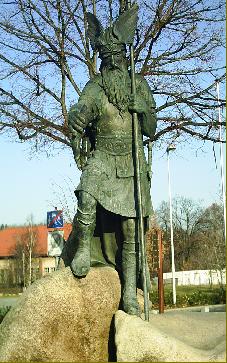|
|
|
Miscellaneous Works of Art Depicting Old Norse Mythology from the 18th 19th and 20th Centuries [HOME] [POPULAR RETELLINGS] |
||||||
| THE 18th CENTURY | ||||||
|
"Mars or Tyr" from an 18th Century Manuscript 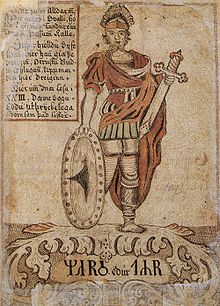 The illumininated manuscript leaf above demonstrates that ideas concerning the Norse gods were still very much intertwined with the names of the days of the week in the popular mind, as the Icelandic Eddas first entered into the public consciousness in the mid-1700s, introducing the mythology of these gods for the first time. The following artwork forms a hybrid of what would afterward become two distinct trends of inspirations in Norse mythological art. Here the figure of Frigga, wielding sword (left), is inspired by Richard Verstegan's depiction of the Saxon gods that lend their names to the days of the week, in his Restitution of Decayed Intelligence in Antiquities first published in 1605. The other figure on horseback (left), represents Odin on his eight-legged steed Sleipnir, directly inspired by the account given in Snorri's Edda. 1756 Paul Henri Mallet Monumens de la Mythologie et de la Poesie des Celtes et Particulierement des Anciens Scandinaves 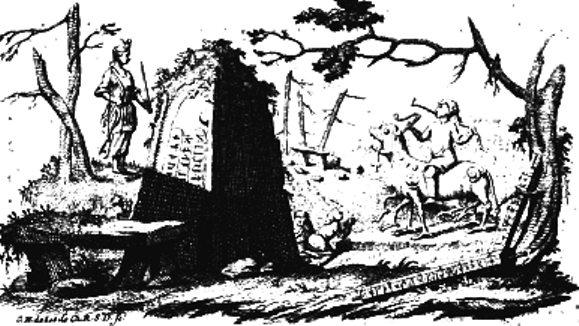
|
||||||
|
Appropriately, the first modern image of an actual scene from Old Norse mythology depicts the emergence of the first living beings as described in Snorri's Edda. Nicolai Abildgaard (1743-1809) 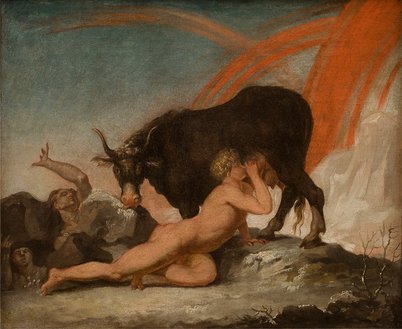 1777 Ymir suckling the Cow Audhumbla as she licks Bur from the ice 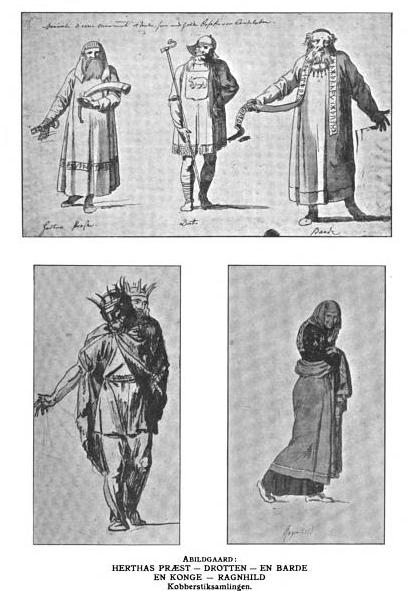 1778 Costume Designs for a Royal production of Johannes Ewald's Drama 'Balders Død' |
||||||
|
1787 Louis-Jean Desprez Scenery for the Opera "Frigga" 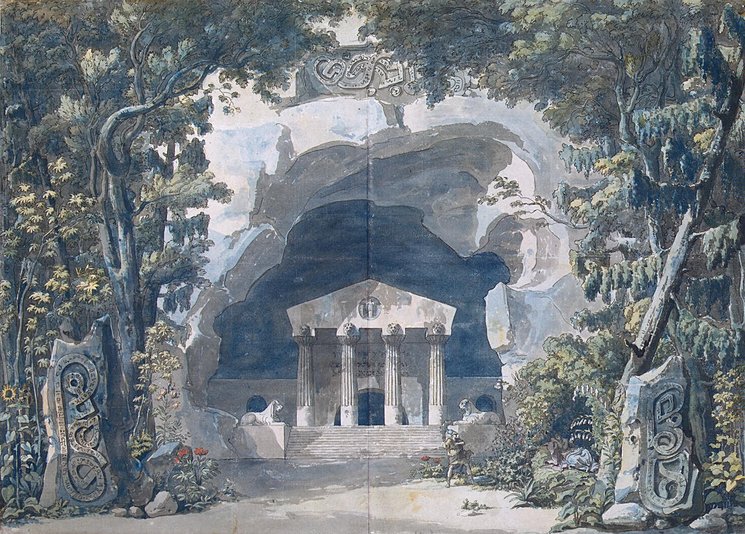 Frigga's temple, flanked by runic stones, in the holy grove of Uppsala
|
||||||
|
Johann Heinrich Füssli [Henry Fuseli] (1741-1825) Henry Fuseli, a Swiss painter, draughtsman and writer who spent much of his life in Britain. A noted 18th century painter, and leading member of the English Romantic art movement, Fuseli (Fussli) created pictures that explored the darker side of the human psyche. Focusing on historical and allegorical works, Fuseli drew much of his inspiration from literary sources, in particular Shakespeare, Milton and Dante. Noted for his masterpiece The Nightmare (1781), Fuseli favored fantastic and supernatural themes which dominated British tastes from around 1770 to 1830. 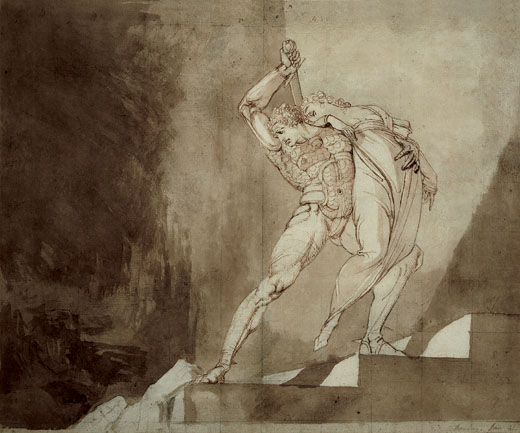 1781 Othar rescuing Syritha from the giants A scene based on Saxo Grammaticus' Danish History for a stage production 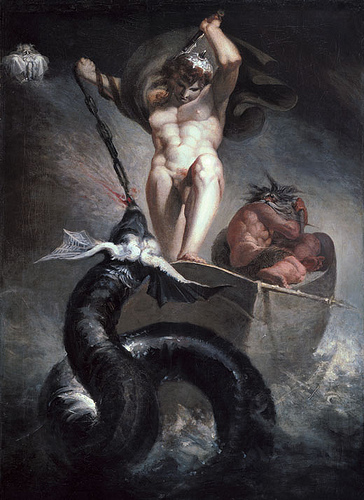 1790 Thor battering the Midgard Serpent Early in 1779 Fuseli returned to Britain where he found a commission awaiting him from Alderman Boydell, who was then setting up his Shakespeare Gallery. Fuseli painted a number of pieces for Boydell. In 1788 Fuseli married one of his models, Sophia Rawlins, and soon after became an associate of the Royal Academy. In 1790, he presented Thor Battering the Midgard Serpent as his diploma work. Thor is depicted nude, in Neoclassic style. He faces the furious serpent. Hymir turns away cowering with fear. The omnipresent nature of Odin is indicated by his appearance among the clouds watching the fierce battle. His omnipotence is contrasted with the ominous nature of the Midgard serpent emerging from the waves. The sea is churned with the unudation of its black coils and the waves have merged with the clouds. 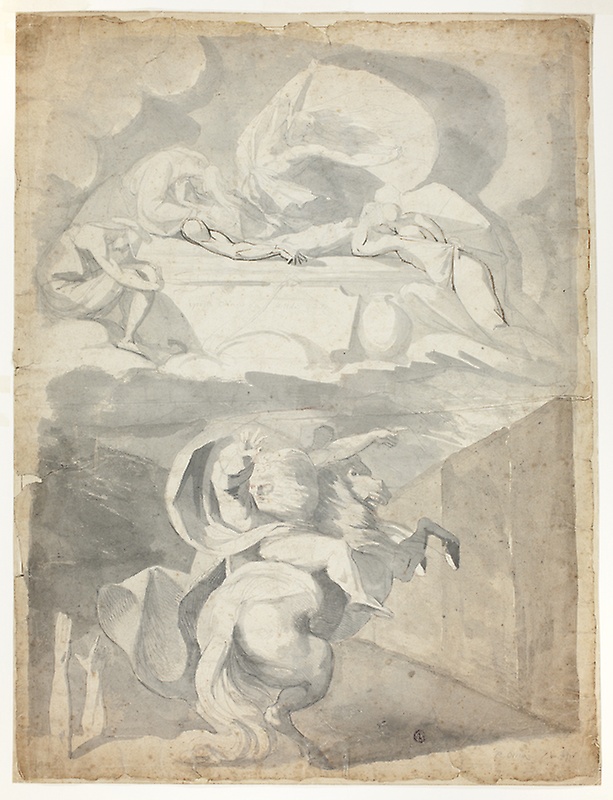 1770 Sketch of Odin in the Underworld 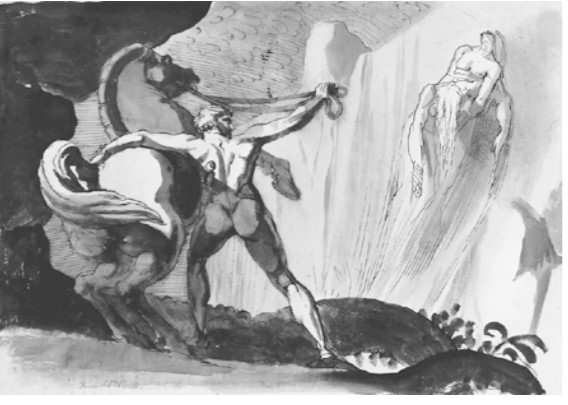 1776 Odin Receives the Prophecy of Balder's Death 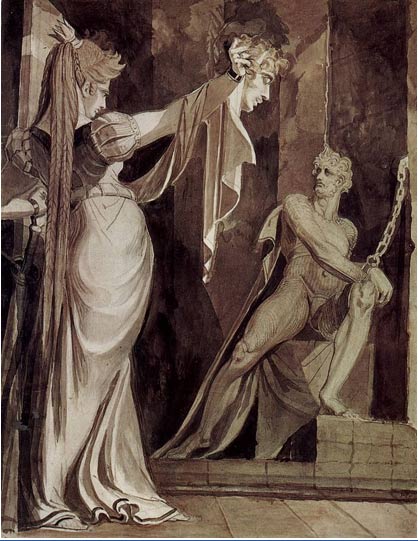 1805 Kriemhild with Gunther's Head |
||||||
| THE 19th CENTURY | ||||||
|
1810 Artist Unknown Di Dei Della Mitologia Norrena 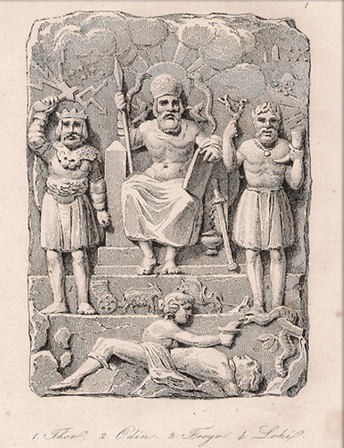 This image appears to be based in part on the illustration of Thor in Richard Verstegan's Restitution of Decayed Intelligence in Antiquities, yet it shows knowledge of Snorri's Edda, including Thor's goat-drawn wagon (second step from bottom) and the tale of Loki and his wife Sigyn (foreground). It is remarkably similar to the Frontispiece for Nils Henrik Sjöborg's Samlingar för Nordens Fornälskare (1822). |
||||||
|
Christoffer Wilhelm Eckersberg (1783-1853) 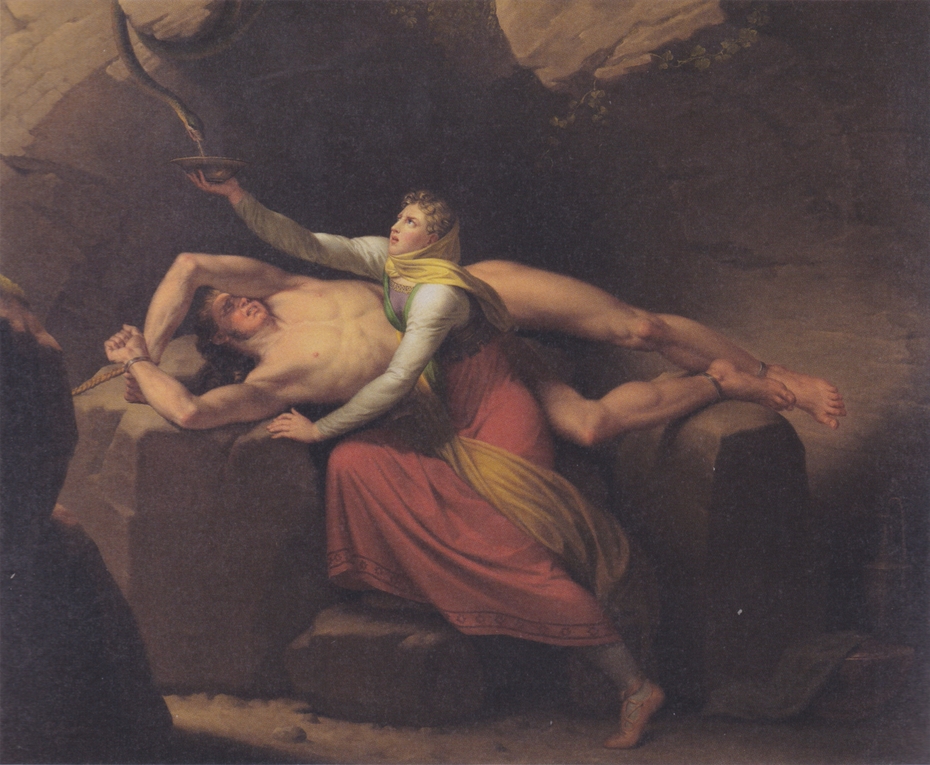 1810 Loki and Sigyn  1817 The Death of Baldur |
||||||
Johan Gustaf Sandberg
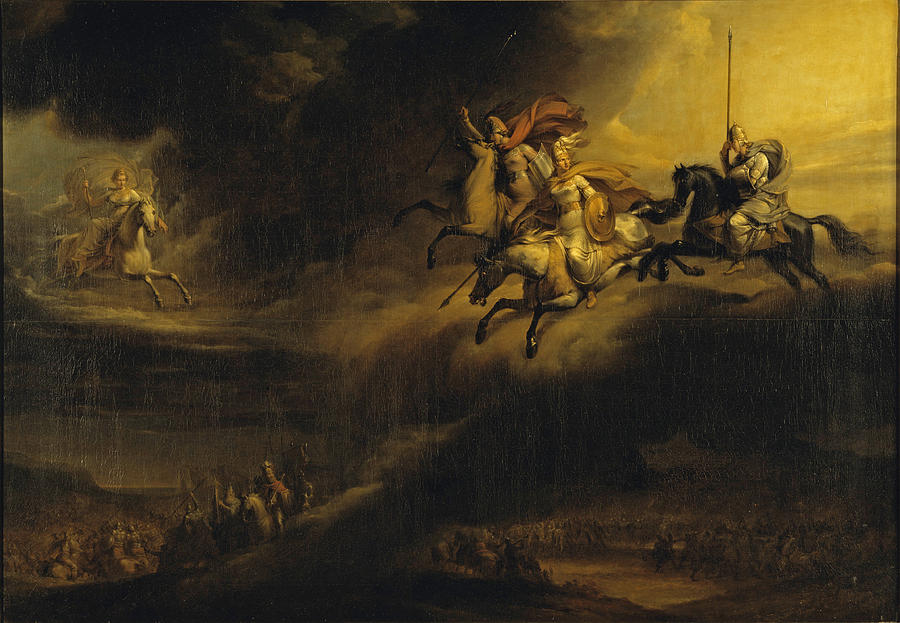 Valkyries Riding to Battle, c. 1820 |
||||||
|
Johann Ludwig Lund (1777-1867)
|
||||||
|
Carl Wahlbom (1810-1858)
|
||||||
|
1839 Illustration from Brage og Idun et Nordisk Fjærdingårsskrift Volume 1, Issue 1 by Frederik Barfod 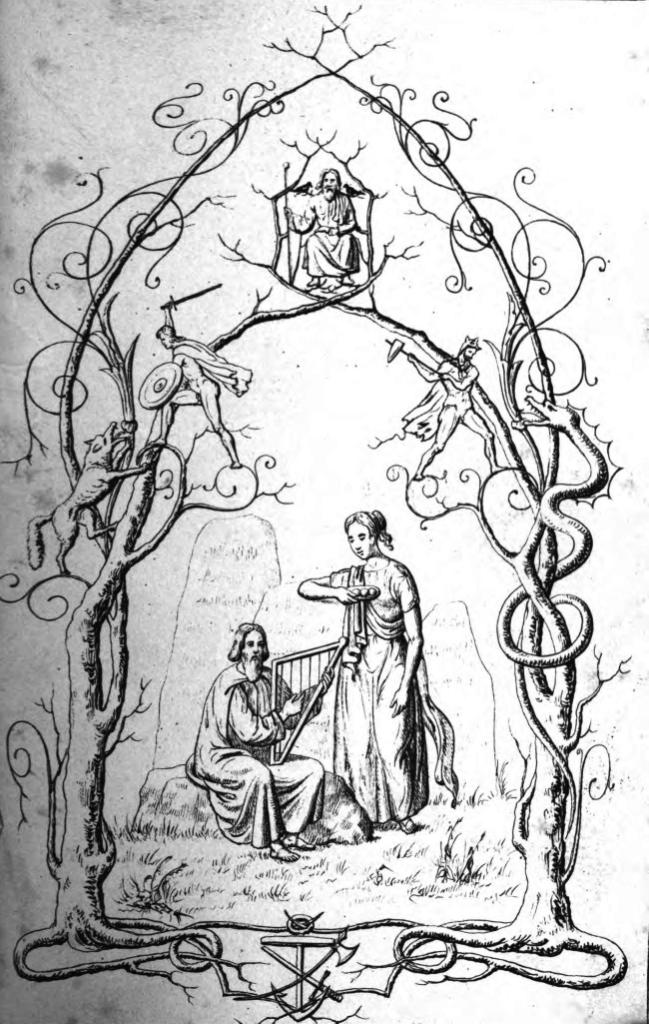 Tyr (left with sword), Odin (center), and Thor (right) |
||||||
|
B.E. Fogelberg (1786-1854)
|
||||||
|
1840 Abridged History of England Nerthus 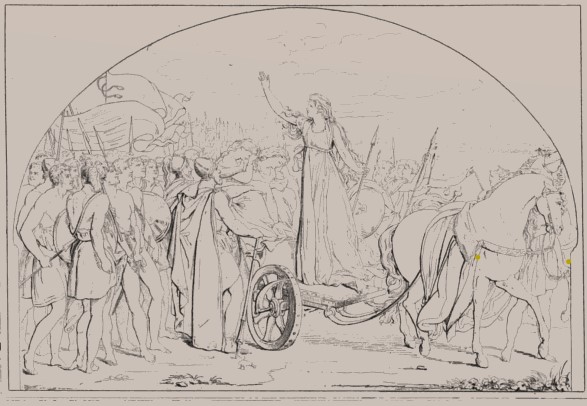 Anglo-Saxon Idols 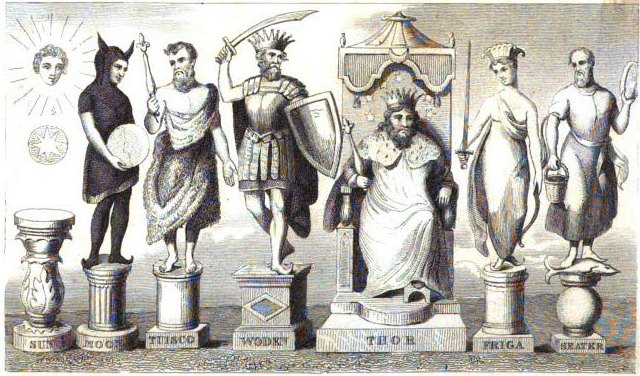 |
||||||
|
||||||
|
Otto Henrik Wallgren
(1795–1857)
Richard Verstegan's Restitution of Decayed Intelligence in Antiquities. The stars surround the idol's head are now incorporated into his crown. |
||||||
|
1853 Harald Conradsen Bragi and Idun 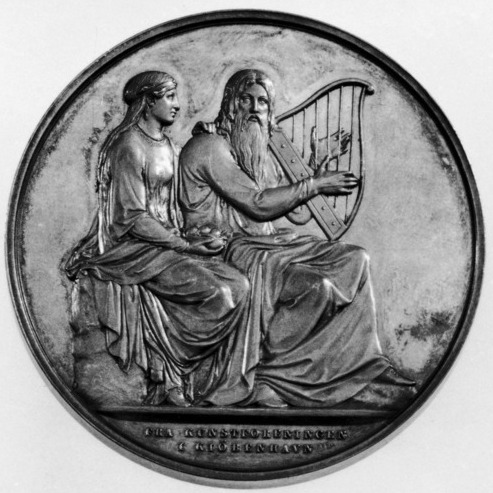 |
||||||
|
||||||
|
1862-63 Studentmötet i Lund och Kopenhamn Student Meeting in Lund and Copenhagen
|
||||||
|
1863 Carl Gustav Qvarnström 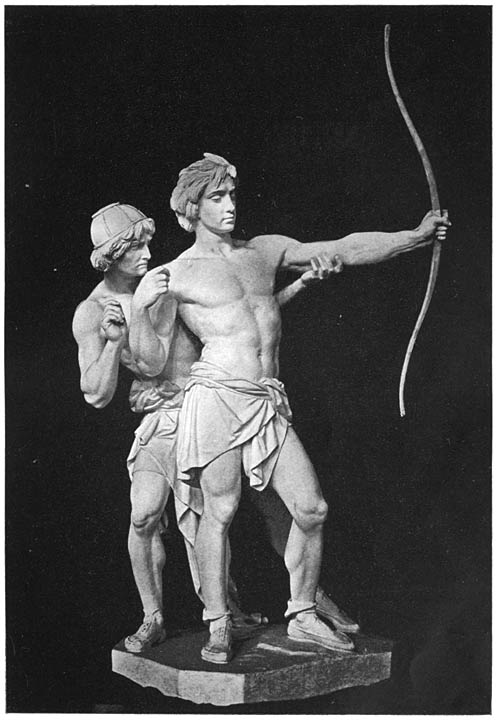 Loki aims an arrow for Hödur Other works: Uller (1841), Idun (1843), Idun bortröfvad af jätten Tjasse i örnhamn (1856) Valkyrjor föra en fallen kämpe till Valhall |
||||||
|
1866 Johan P. Molin Aegir and his Daughters Fountain, Stockholm, Sweden |
||||||
|
||||||
|
Peter Nicolai Arbo (1831-1892) 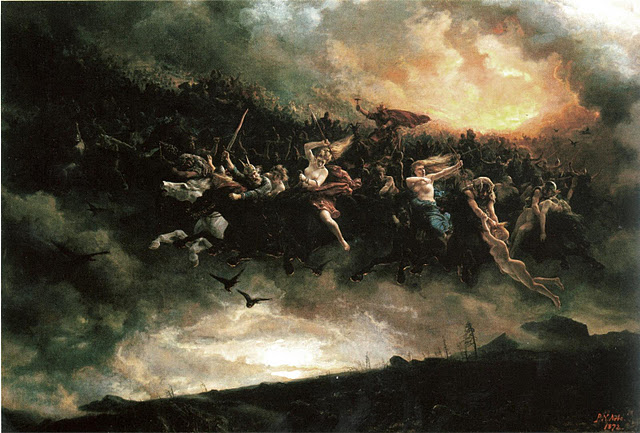 1872 The Asgard Ride |
||||||
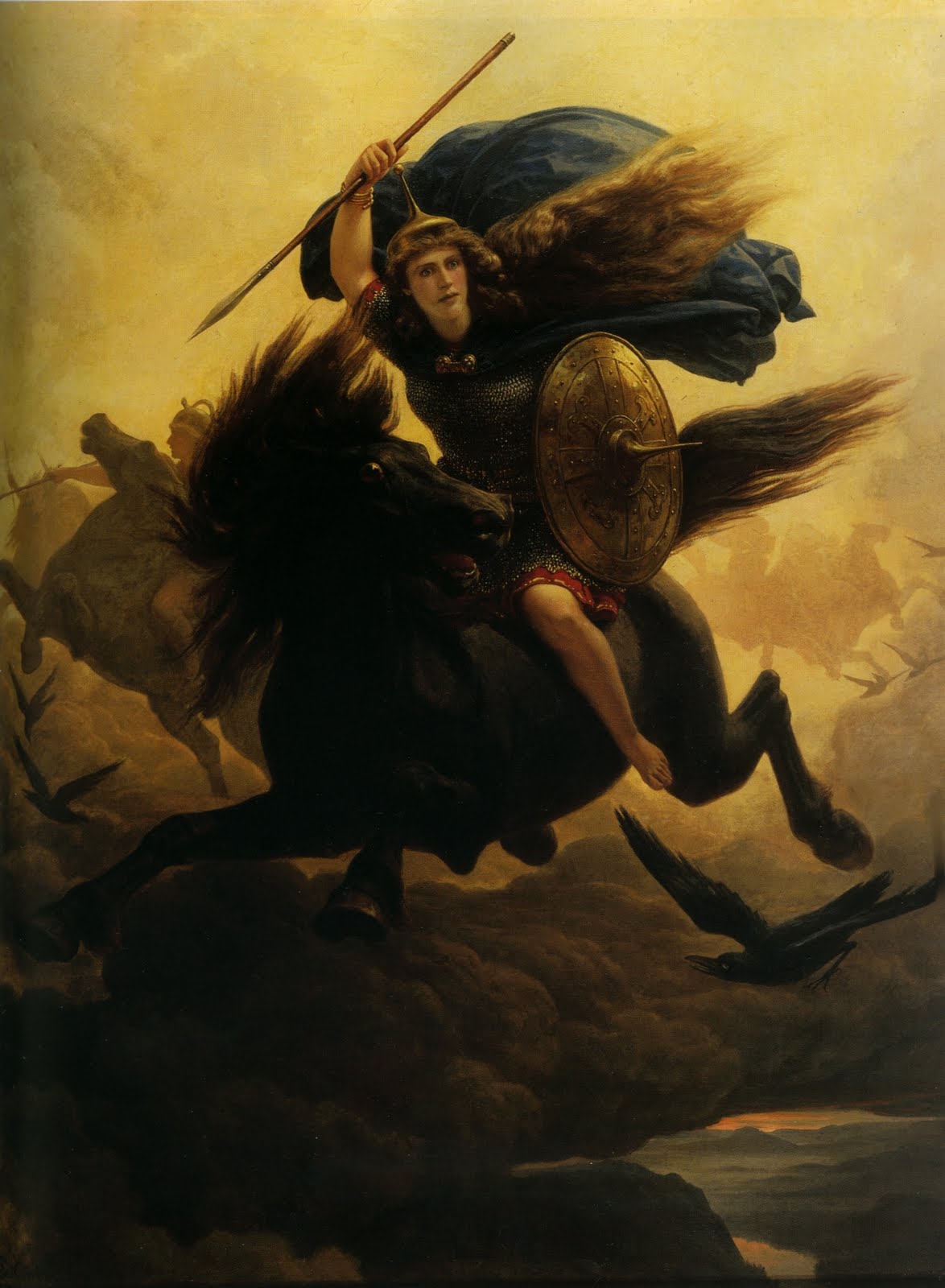 1865 Valkyrie 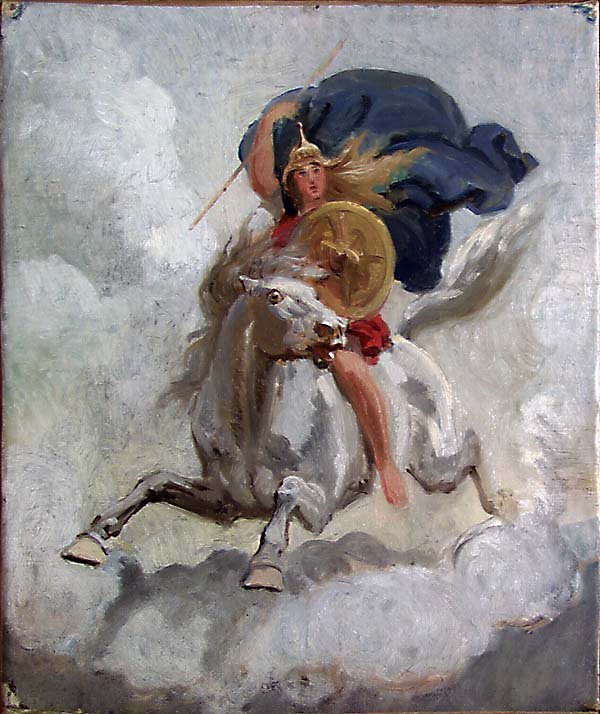 1865 Valkyrie Sketch |
||||||
|
||||||
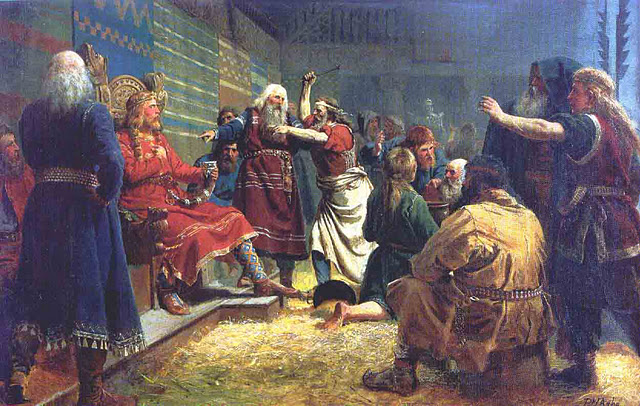 1860 Hakon the Good |
||||||
|
Odin the Northern God of War by Valentine Cameron Prinsep Published in Harper's Weekly, July 1871 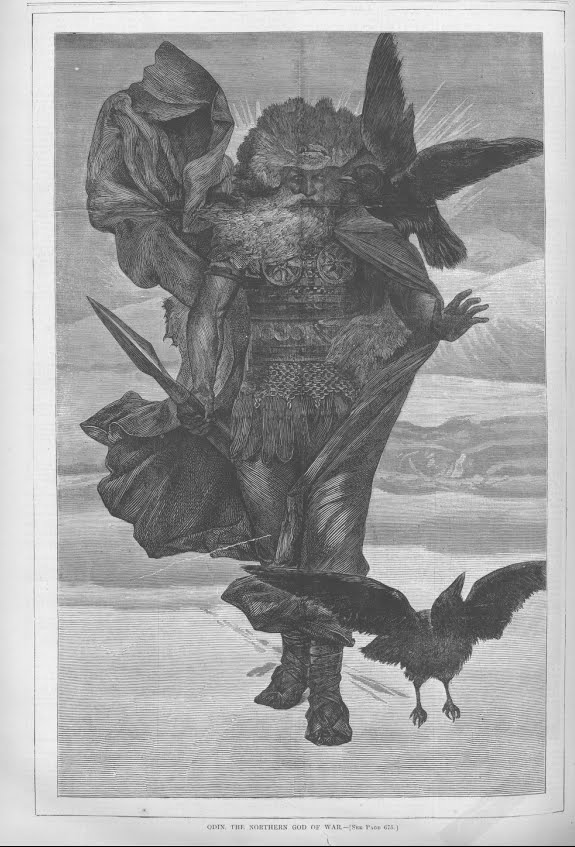 |
||||||
|
1876 F. Sandys in Historical & Legendary Ballads by Walter Thornbury LOKI 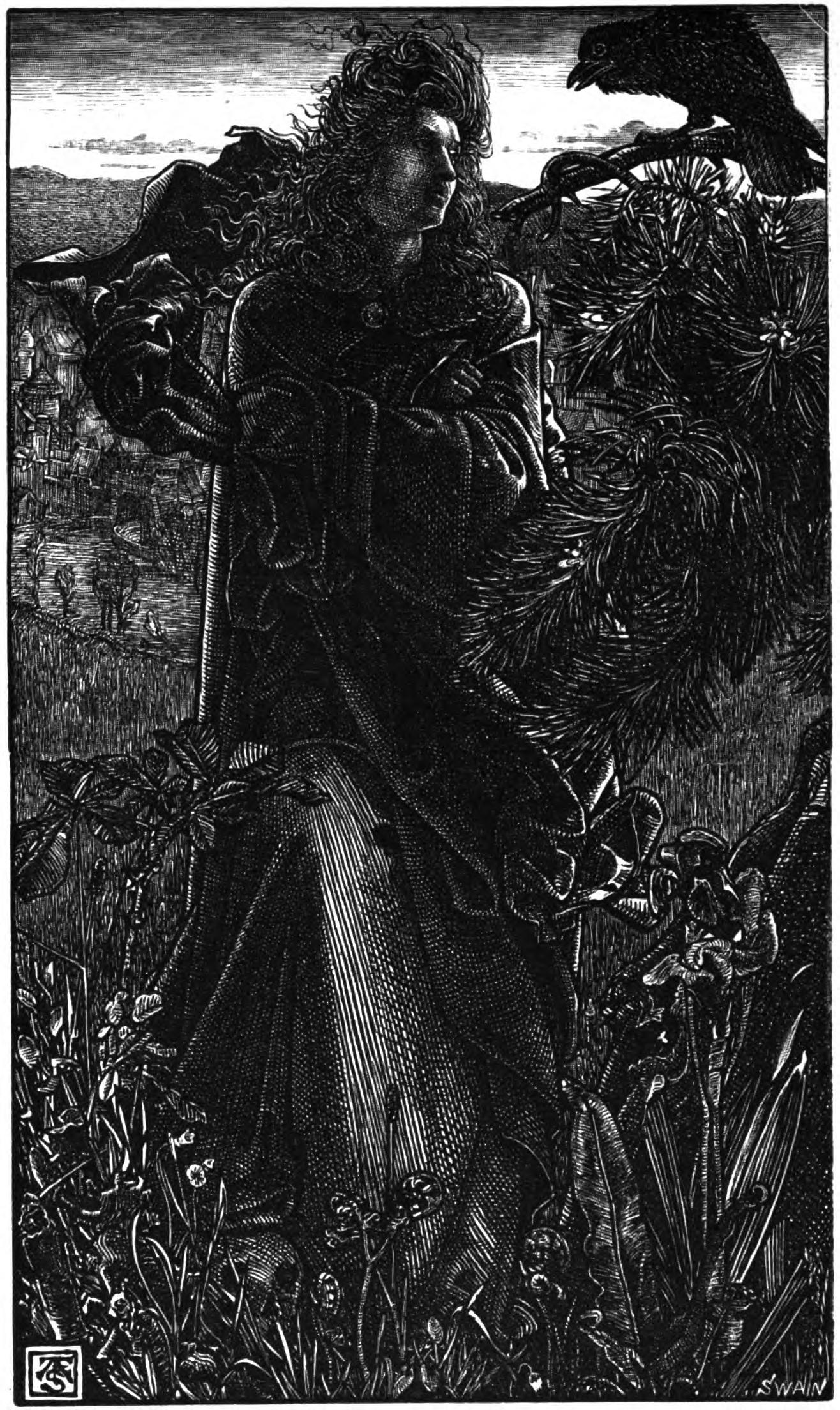 |
||||||
|
1876 Brunnhilde and Siegfried's
Body A Scene from Richard Wagner's Götterdammerung (Face of Odin below) 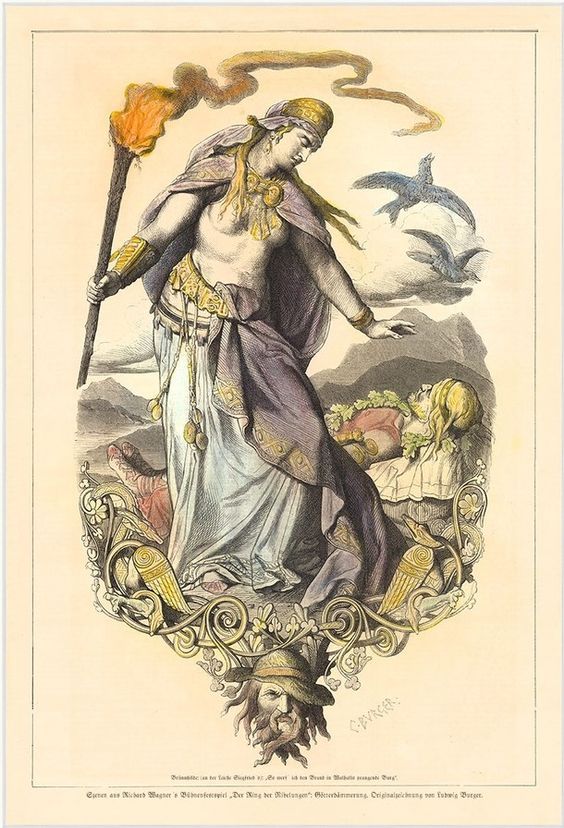 |
||||||
|
1870s Robert Krausse Wotan 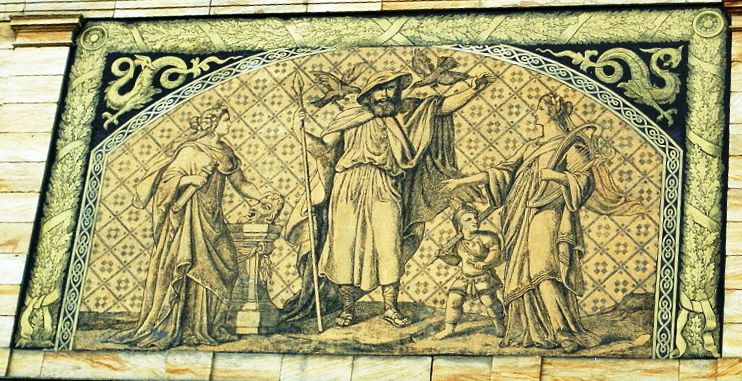
|
||||||
|
||||||
|
1897 Rolf Adlersparre (1859-1943) Guardians of Djurgård's Bridge
|
||||||
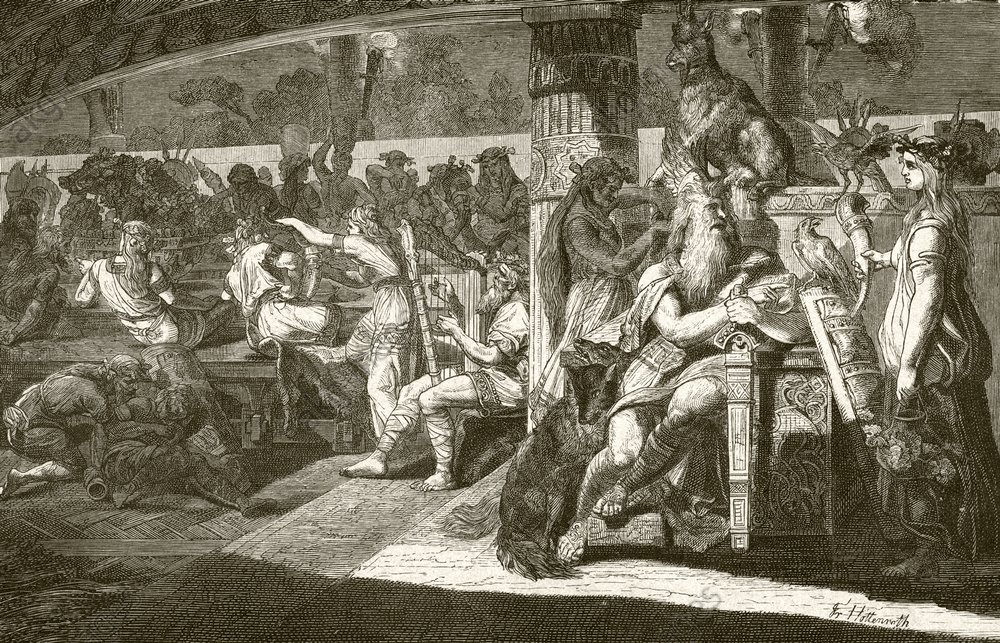 1890 Frederich Hottenroth The Heroes in Valhalla |
||||||
|
1890s Aubrey Beardsley Richard Wagner's Die Götterdämmerung 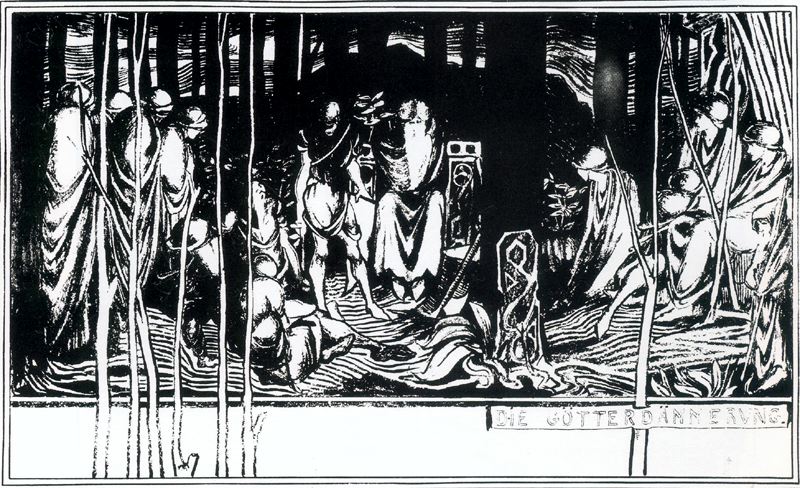 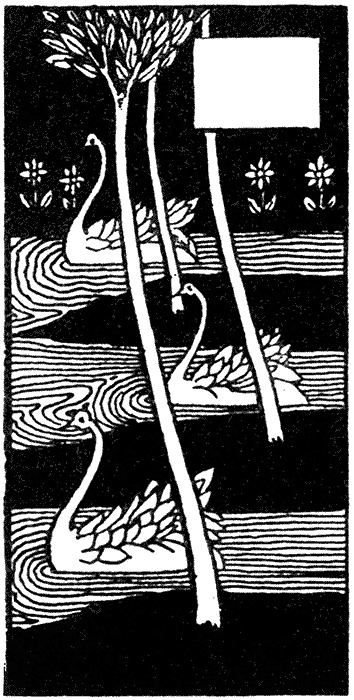 Swan-maidens |
||||||
|
1892 Karl Franz Eduard von Gebhardt Loki and Sigyn 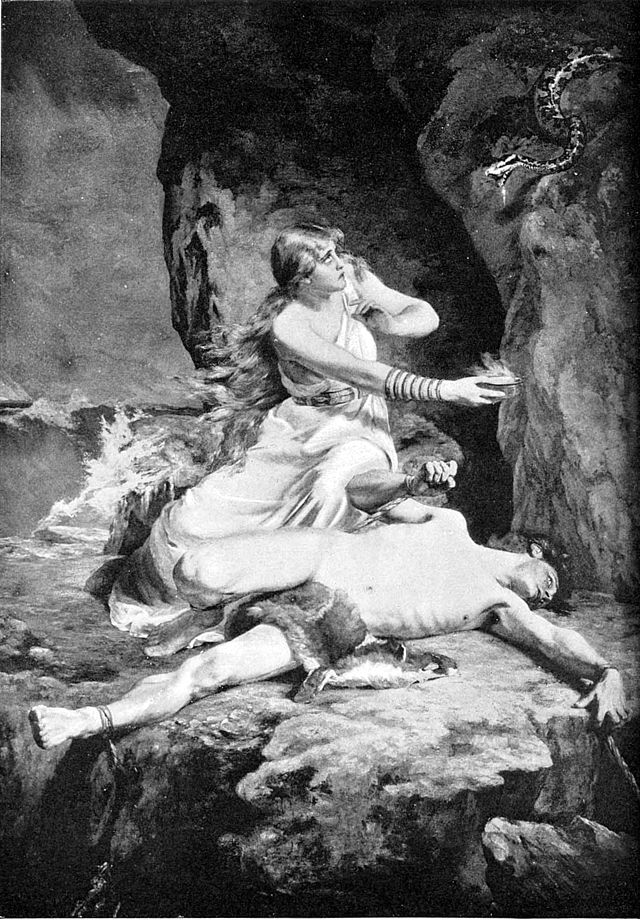 |
||||||
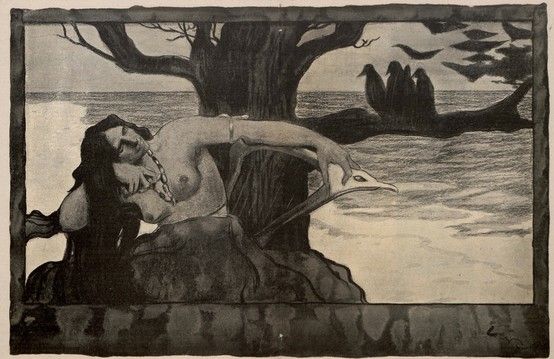 1897 Fritz Erler, Edda: The Seeress' Prophecy |
||||||
|
Gerhard Munthe (1849-1929) Illustrations for Heimskringla, 1897
|
||||||
|
1897-99 Anders Bundgaard The Gefion Fountain Copenhagen, Denmark 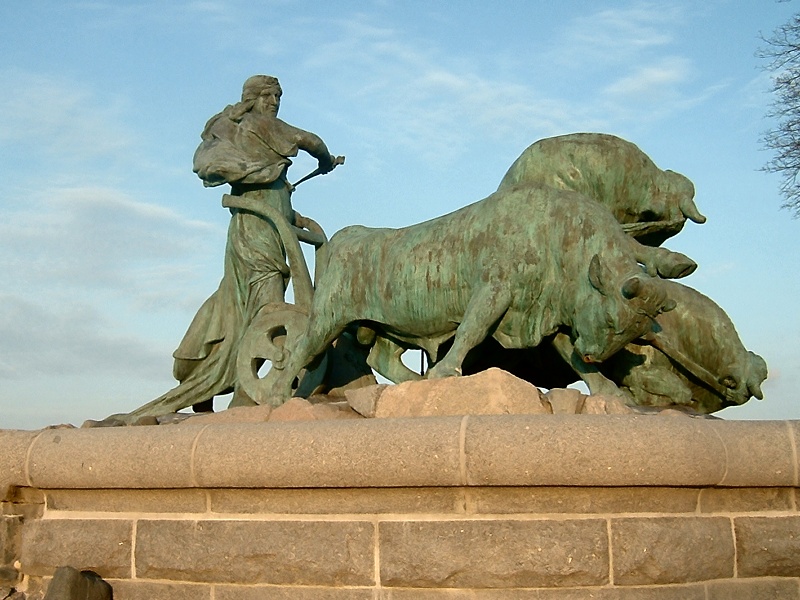 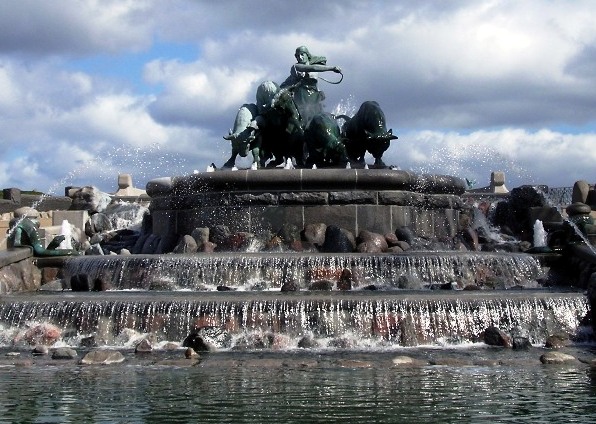 |
||||||
|
THE 20th CENTURY |
||||||
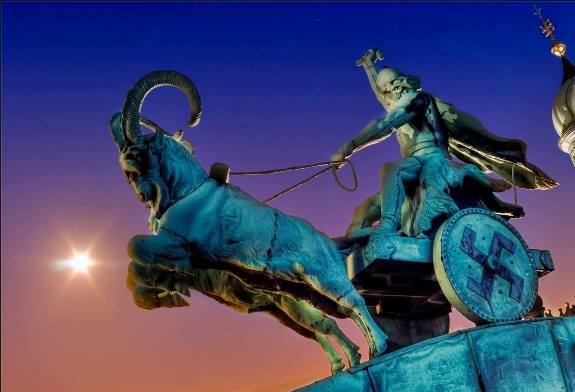 |
||||||
|
1901 Anders Zorn Freyja 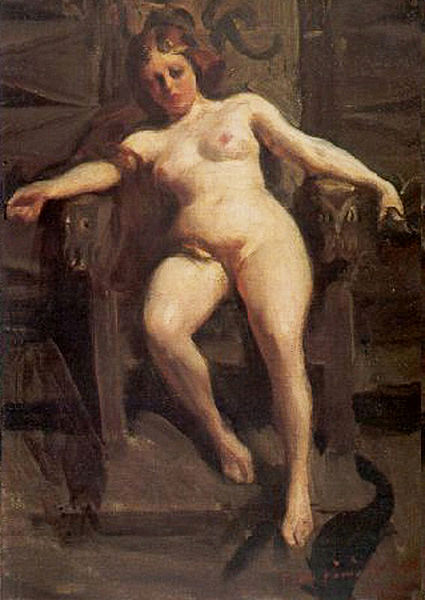 1901 Rudolf Maison Odin |
||||||
|
||||||
|
1903 Henrik Wissler Tors Fiske, Stockholm
|
||||||
|
1905 B.E. Ward Idunn 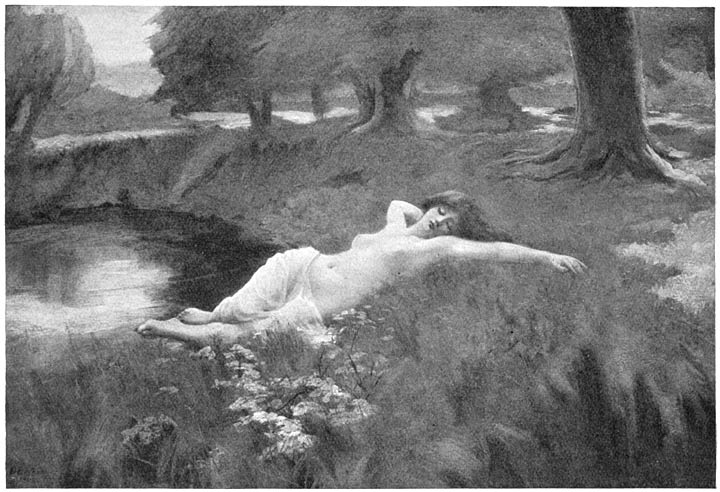 |
||||||
|
1907 Nils Asplund Heimdall as Culture Bringer 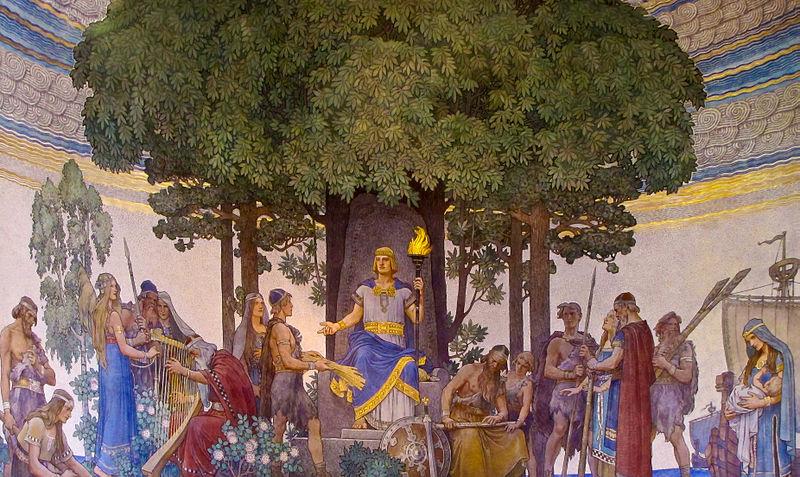 The Bronze Age  |
||||||
|
1908 Stephan Sinding Valkyrie, Copenhagen 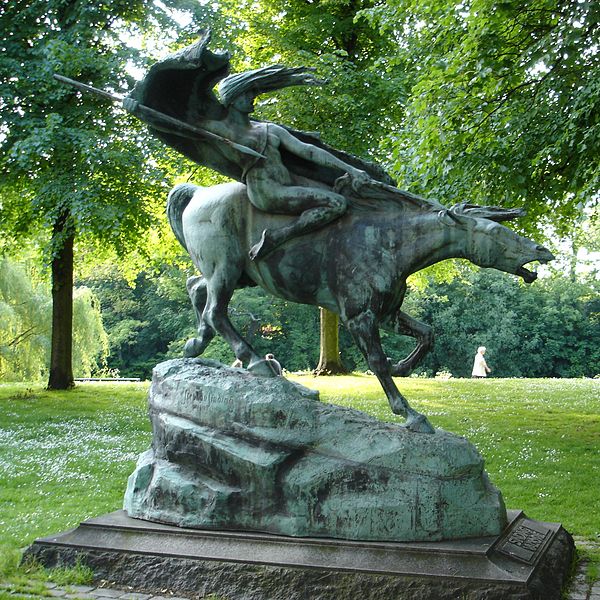 |
||||||
|
1909
Einar Jónsson Audhumbla and Ymir Selfoss, Iceland 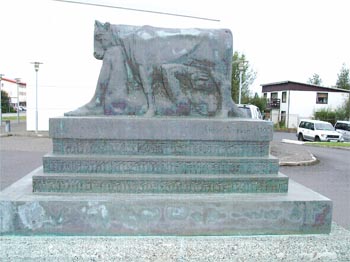 |
||||||
|
1912 Stockholm Olympiad 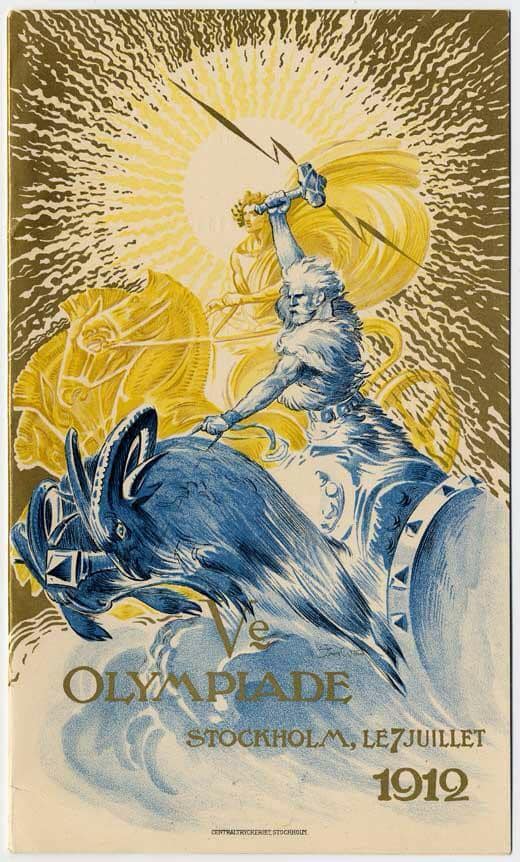 |
||||||
|
The Story of Europe, 1912 by Edward Snodgrass
1913 Kai Neilsen Ymers brønd 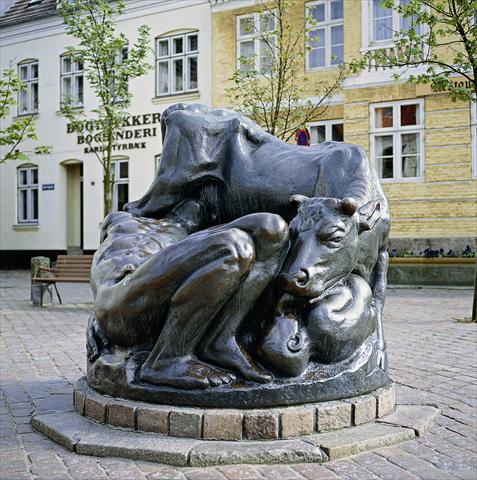 |
||||||
|
1914 Anton Marussig German Picture Postcard Odin at SonnenWende (Solstice) 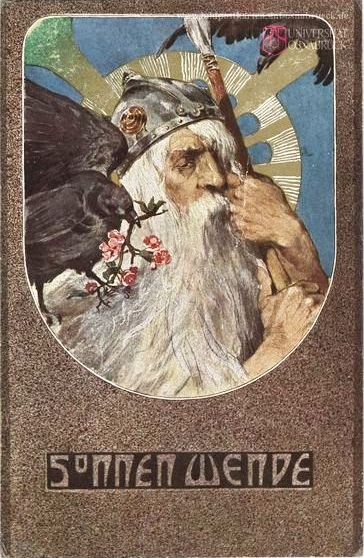 1916 German Picture Postcard Wotan Der Wanderer 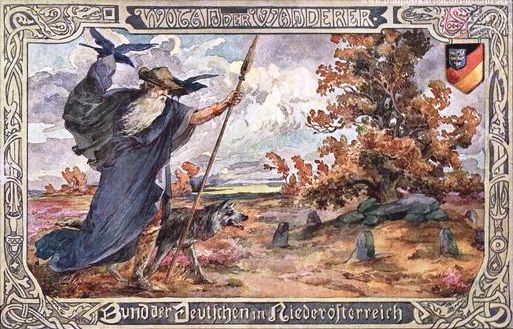 |
||||||
|
1917 Eugene Grasset Die Walküre
|
||||||
|
1923 Ida Matton Loki's Punishment
|
||||||
|
1926 Carl Johan Bonnesen Thor at War with the Jötuns Grounds of Glud & Marstrand, Odense, Denmark 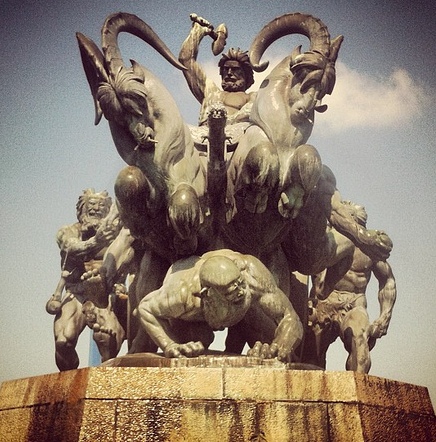 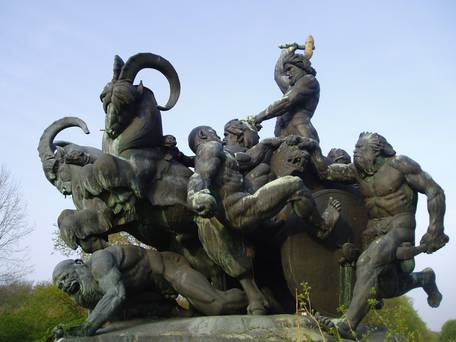 |
||||||
|
1930 Boris Artzybasheff Padraic Column's Orpheus Later Published as The Myths of the World 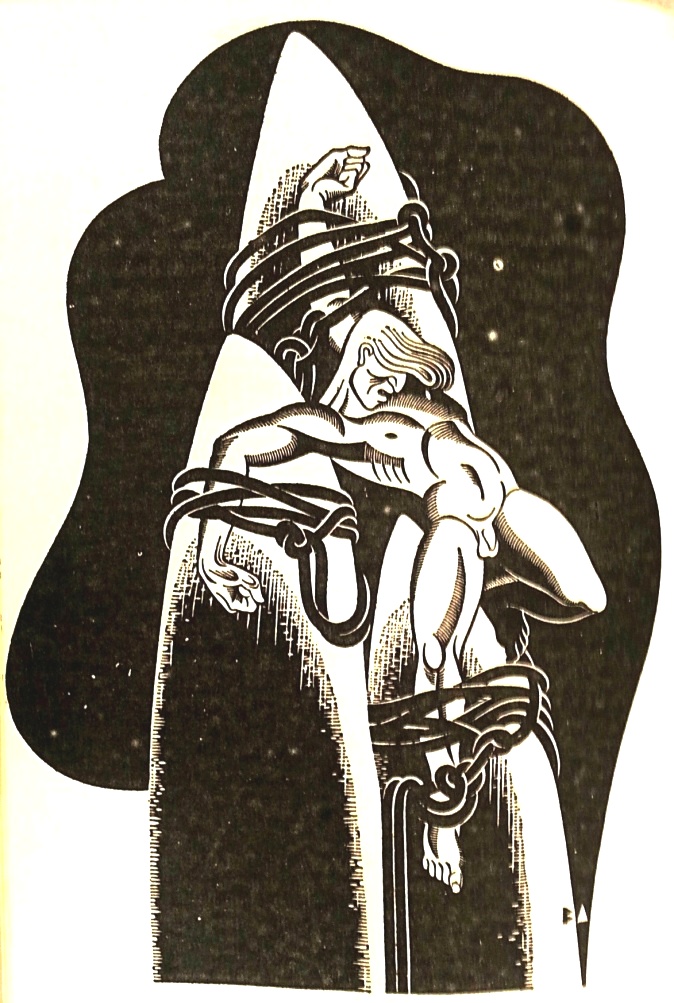 The Punishment of Loki |
||||||
|
1948 Stig Blomberg Ask and Embla Sölvesborg, Sweden 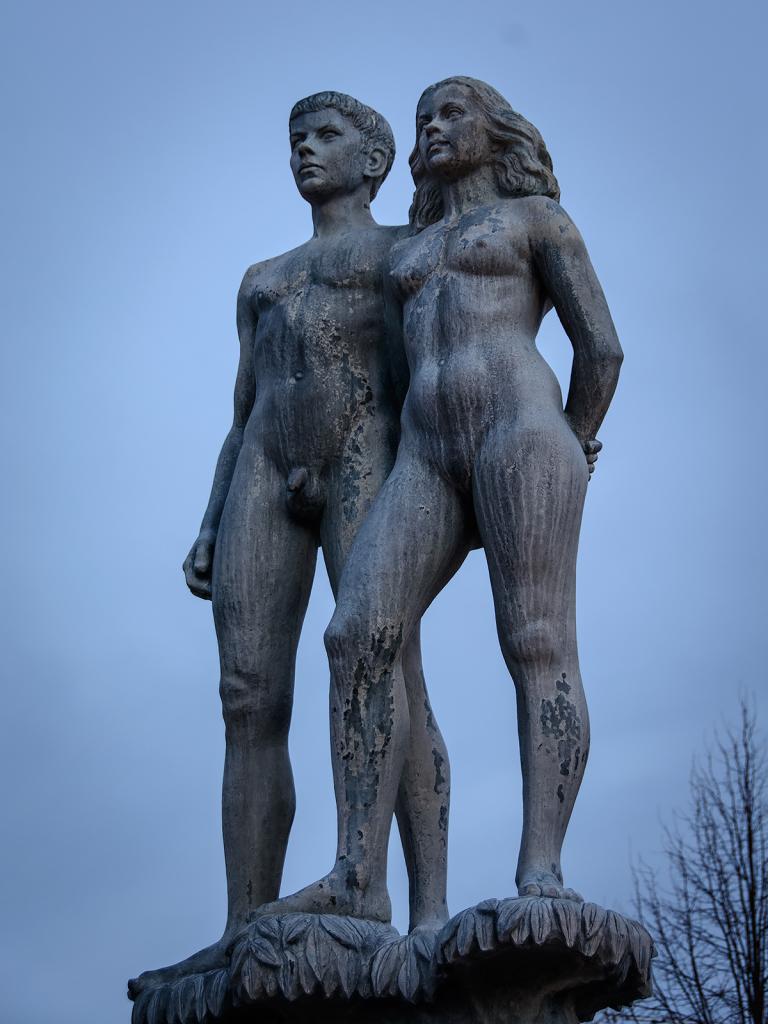 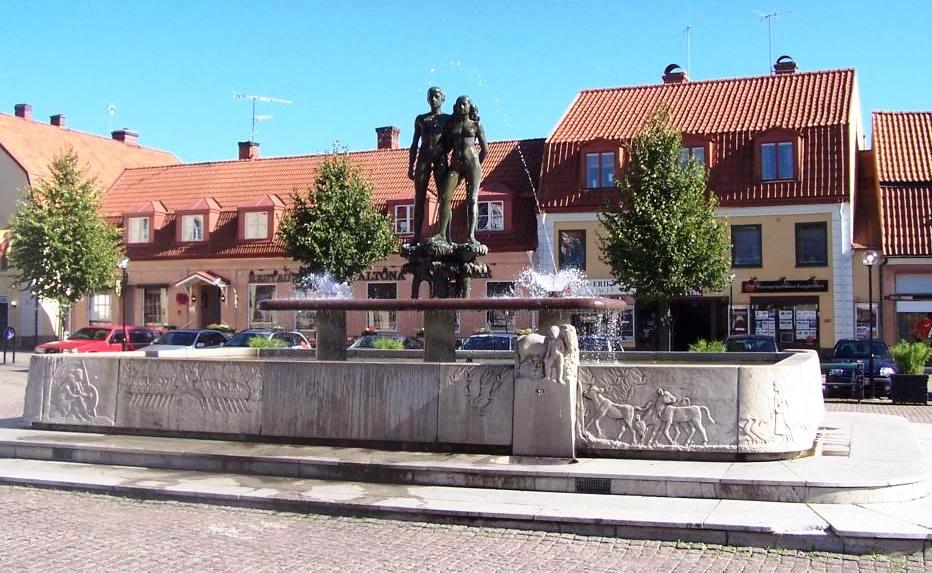 |
||||||
|
1953 James D. Powell Ephemera Grab Bag on Mythology "The Apples of Iduna" 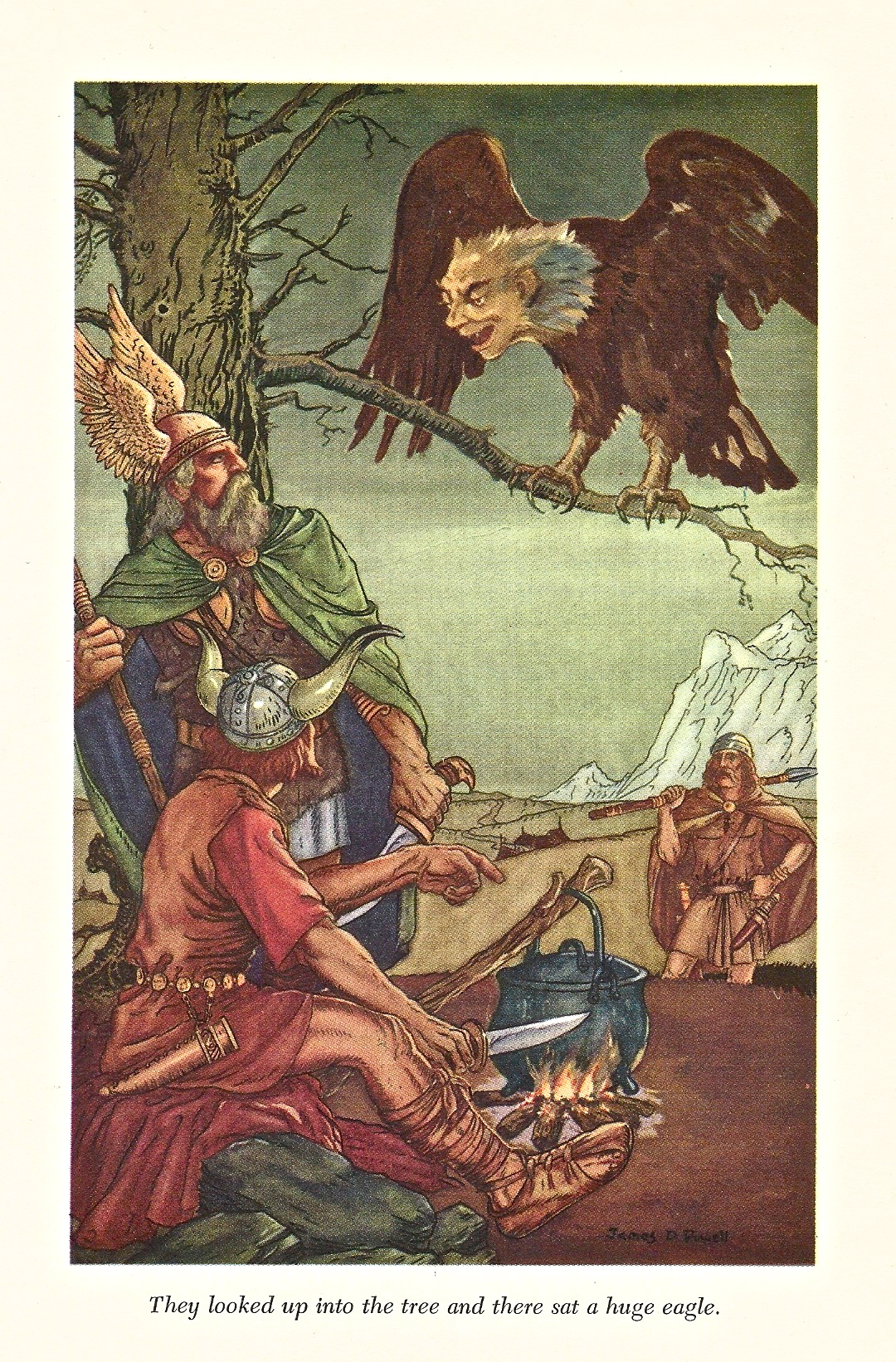 |
||||||
|
Dates Unknown Statuary in Thale, Harz, Saxony-Anhalt, Germany Wotan's Magic Horse |
||||||
|
||||||
|
1999 Steve Field Sleipnir, Wedensbury 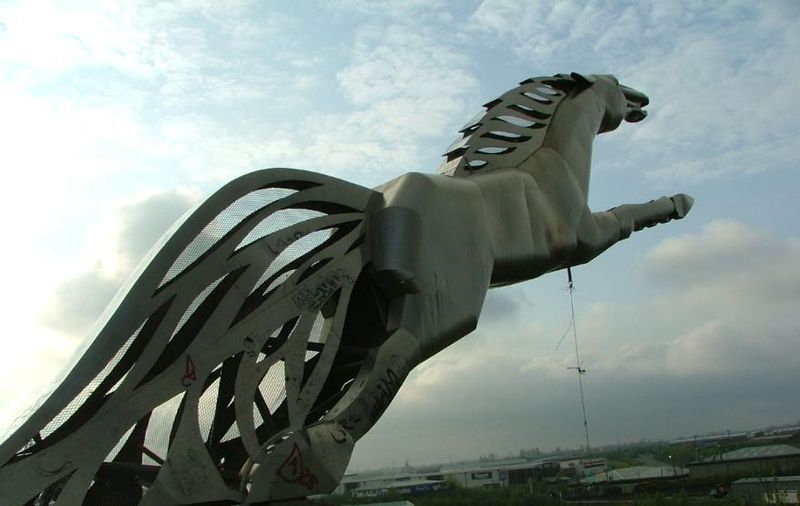 |
||||||
|
Haukur Haldórsson Thor and his Goats Straumur, Iceland 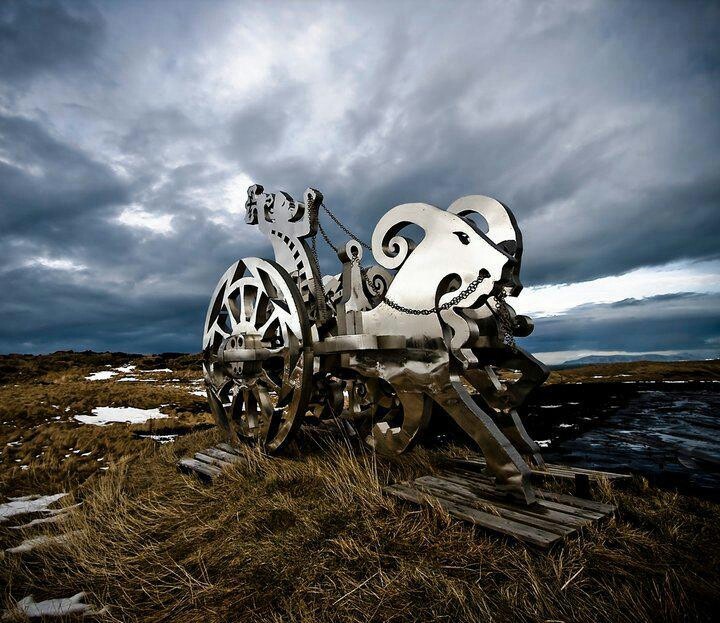 |
||||||
|
Additional Works from Greek Gods in Northern Costumes: Visual Representations of Norse Mythology in 19th century Scandinavia by Hans Kuhn, 11th International Saga Conference |
||||||
|
Ernst Josephson (S, 1851-1906): Odens intåg i Sverige, 1890s. Egron Lundgren (S, 1815-1875): Balderstemplet, 1839. 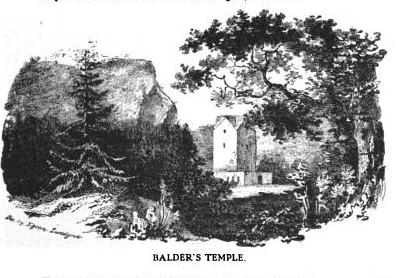 Louis Moe (N/DK, 1859-1945), Ragnar i Ormegaarden, 1890s. Anders Zorn, (S, 1860-1920): Brynhild och Gudrun, 1893. |
||||||
[POPULAR RETELLINGS]
